Life is a journey
中編はこちら
小口までは小雲取越という山道を歩く。登り口は下地橋バス停のすぐ脇からで、次の宿までと考えれば約15kmくらいの道のり。それなりに長いが最初の2日間のアップダウンを思えば全体的になだらかで非常に登りやすく歩きやすい山道である。
To get to Koguchi, we walked along a mountain path called Kogumo start of the ascent is just beside the Shimoji-bashi bus stop, and it is about 15 km to the next inn. It was a long way, but considering the ups and downs of the first two days, it was a very gentle and easy trail to climb and walk.
眺望の良い“百間ぐら”。
The “Hyakken gura” has a great view.
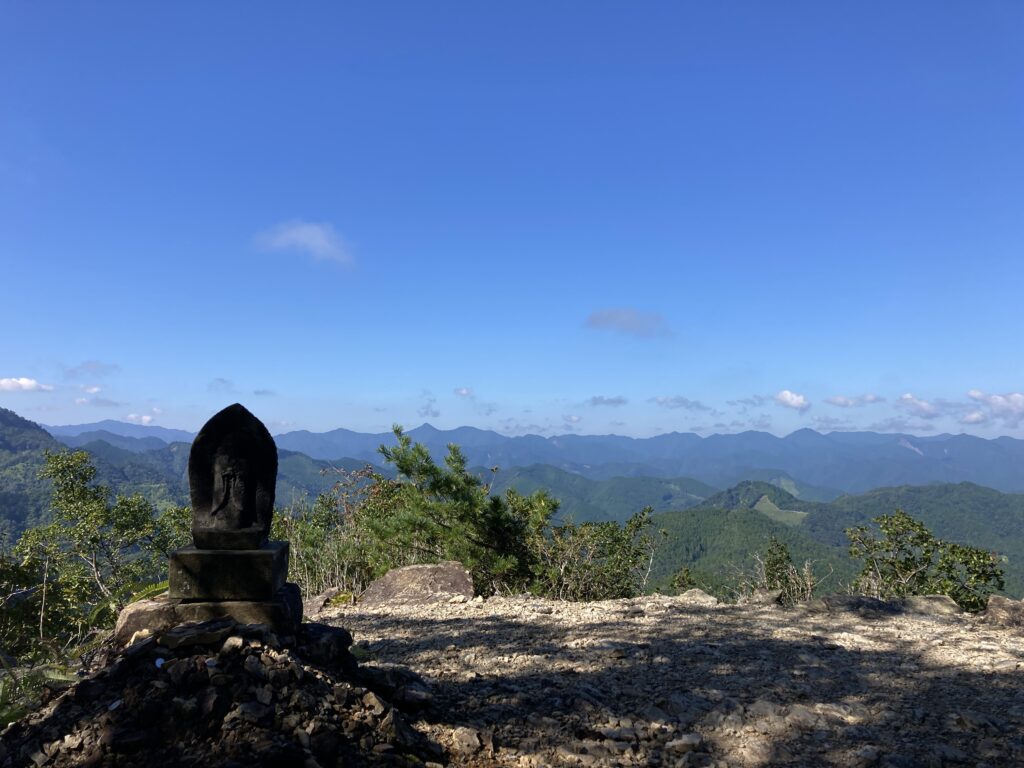
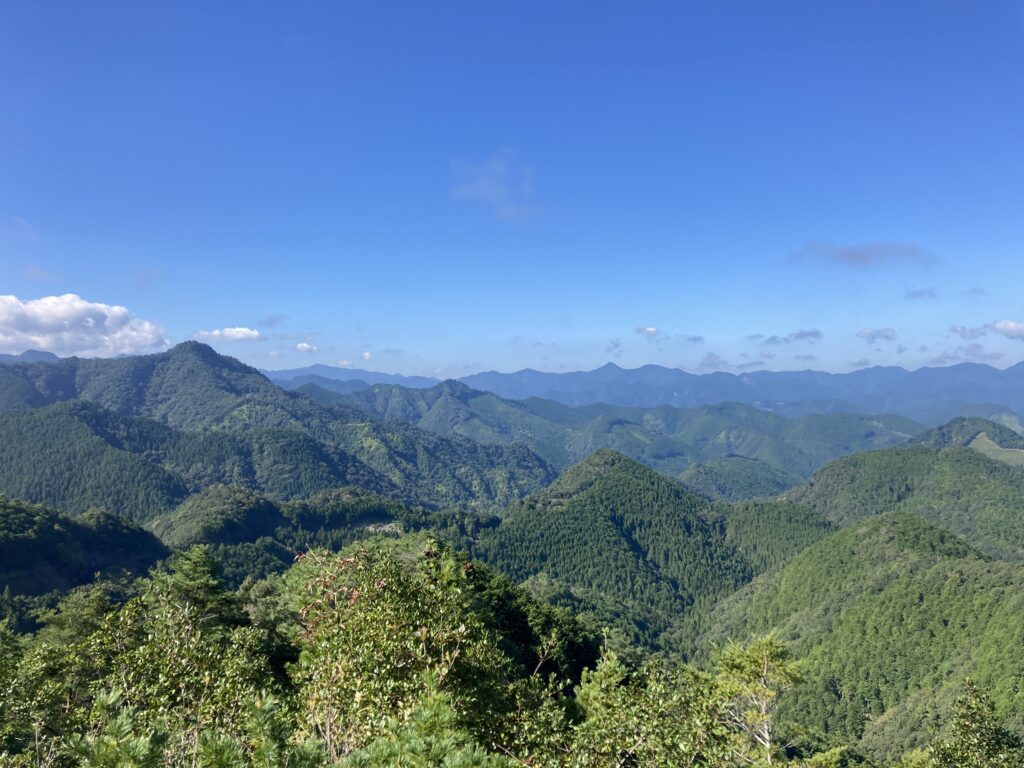
小口の集落に降りる少し手前に、集落が見晴らせる景色の良い琴平さんがある。
Just before descending to the village of Koguchi, there is Kotohira-san, which has a nice view of the village.
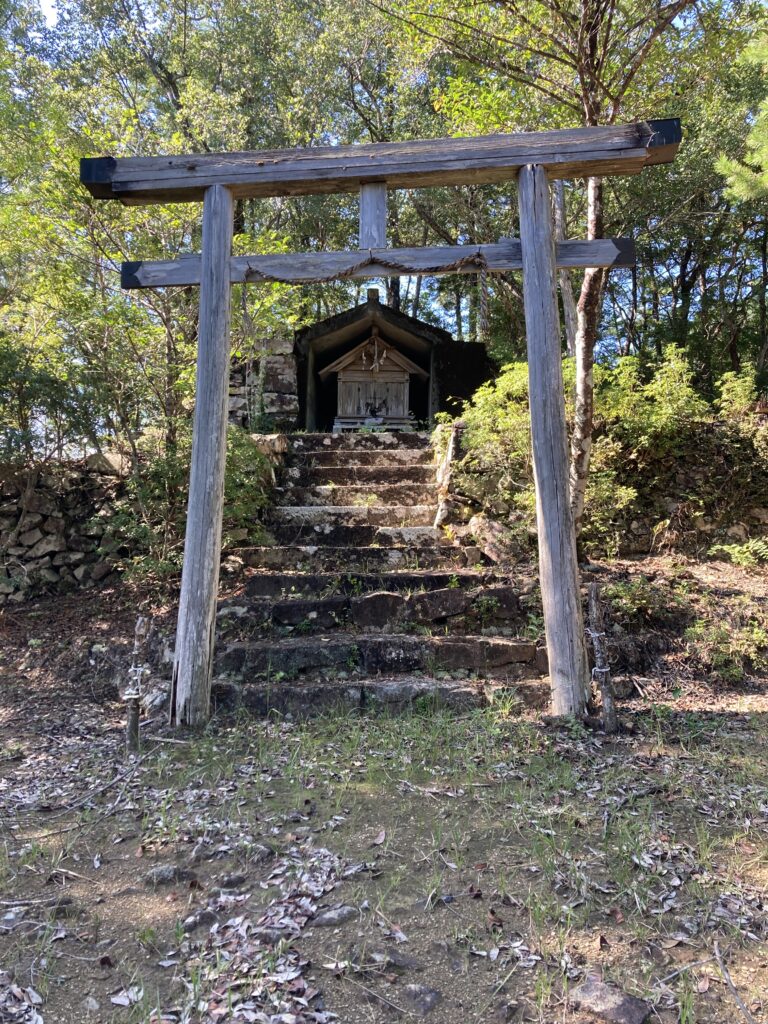
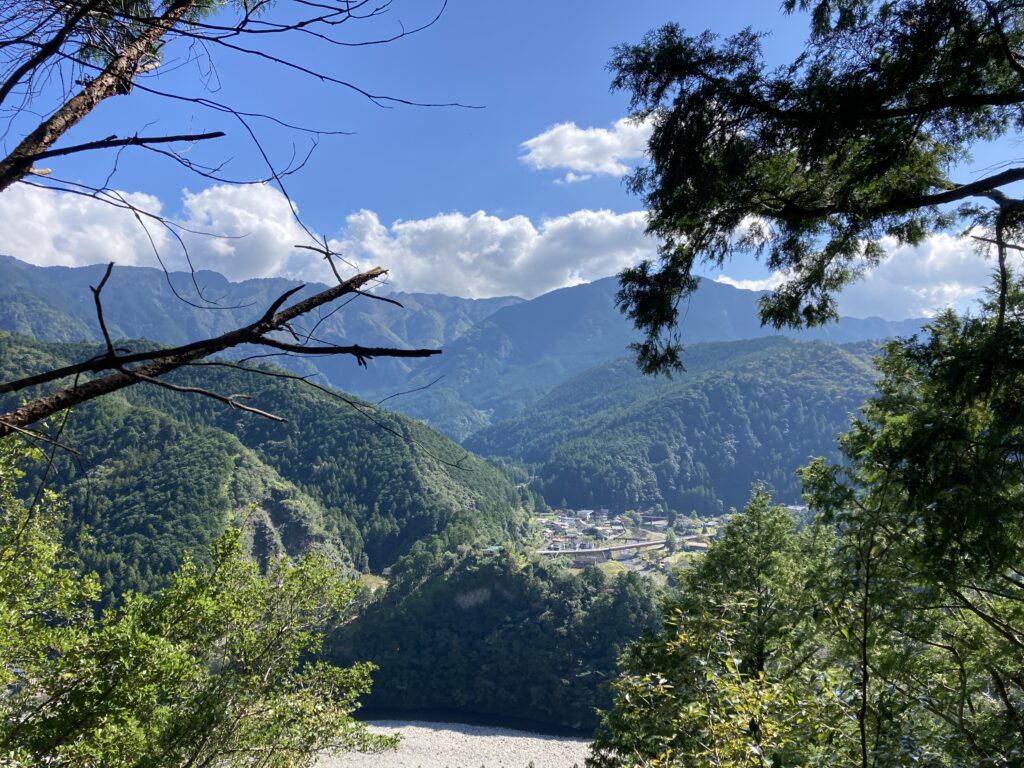
そして余裕を持ってのどかな小口の集落に到着。
We arrived at the peaceful village of Koguchi with plenty of time to spare.
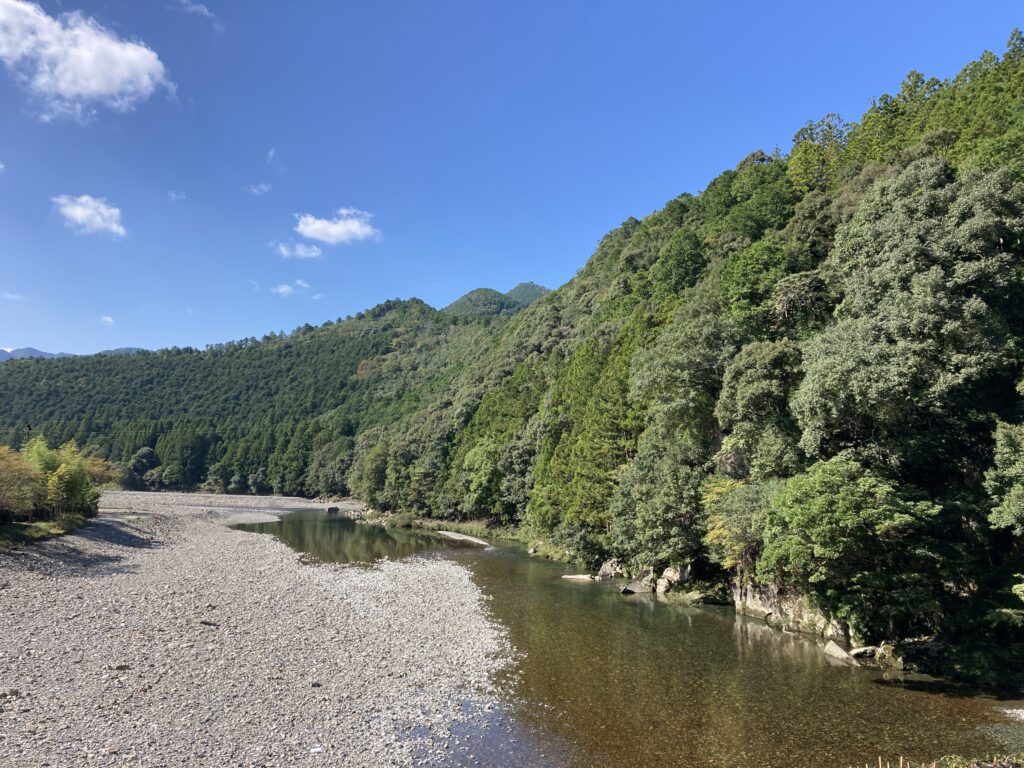
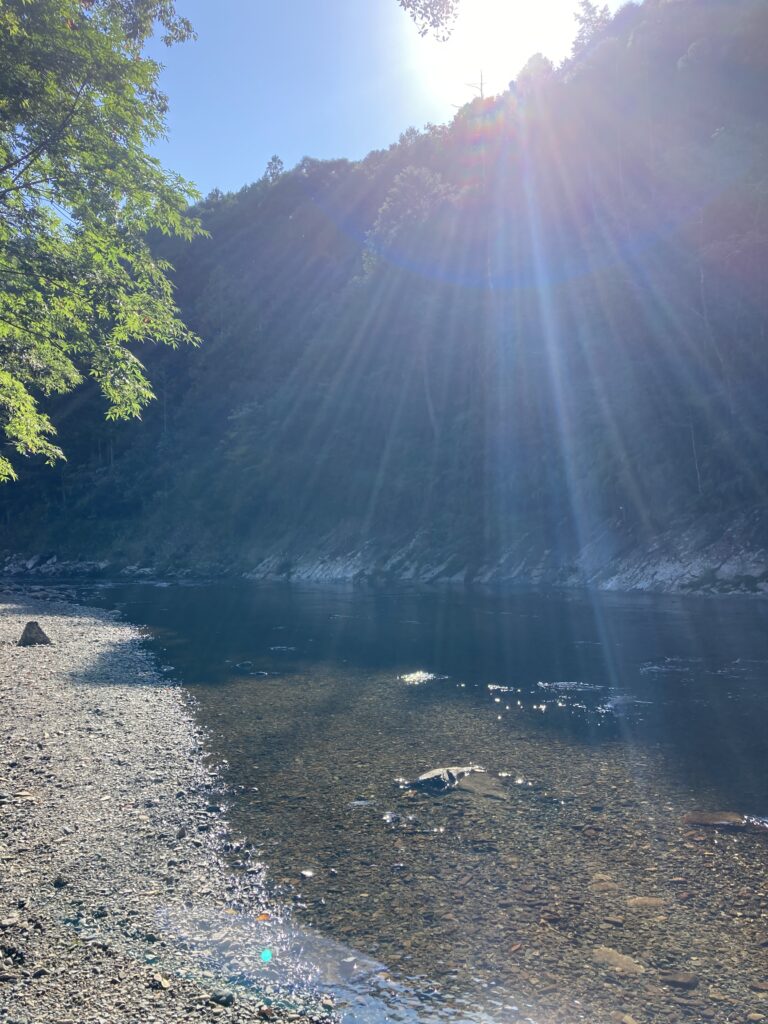
ただし、この小口には宿が2つしかないため、計画的にしっかり前もって確保しておくほうが良いだろう。
However, there are only two lodges in this small area, so it is best to plan ahead and secure them well in advance.
古来、上皇や貴族たちは本宮から川舟で熊野速玉大社まで詣ったそうだが、現在はその約半分程度にあたる小口から熊野川へ出た辺りから下流へしか舟は出ていない。
In ancient times, emperors and aristocrats paid homage to the Kumano Hayatama Taisha Shrine by riverboat from Hongu, but today, boats only go downstream from the small entrance to the Kumano River, about halfway down the river.
今回我々は運よく川舟に乗ることできたので、ここからは舟で一気に熊野川を降る。この川舟は川の水量や天候に大きく左右され欠航となることも多いのため、サブプランとして考えていたが今回はラッキーだった。(要予約 http://kawabune.info)
We were lucky enough to be able to take a riverboat this time, so from here we took the boat all the way down the Kumano River. This riverboat is often cancelled due to the amount of water and weather, so we thought of it as a plan B, but this time we were lucky.
(This page is only in Japanese. And reservations can only be made by phone or fax. Open from March to November.)
舟に乗れない、もしくは乗らない場合は「大雲取越」というその名の通り雲の中を行くような峠を越す険しい山道で、中辺路全体でも最大の難所とされるコースを歩いて熊野那智大社に抜けることとなる。しかし、逆に山を歩くのが好きな人には最もお勧めのコースだとも言える。
If you can’t or won’t take a boat, you will have to walk the “Ohgumo Torigoe”, a steep mountain path that takes you over a pass that, as the name implies, is like going through the clouds, and is considered to be the most difficult course in the entire Nakahechi route to Kumano Nachi Taisha Shrine. On the other hand, it is the most recommended course for those who like to walk in the mountains.
ちなみに世界遺産の中で、世界中で唯一“川の参詣道”が登録されているのが、ここ熊野川である。
By the way, among the World Heritage sites, the Kumano River is the only one in the world where a “river pilgrimage route” is registered.
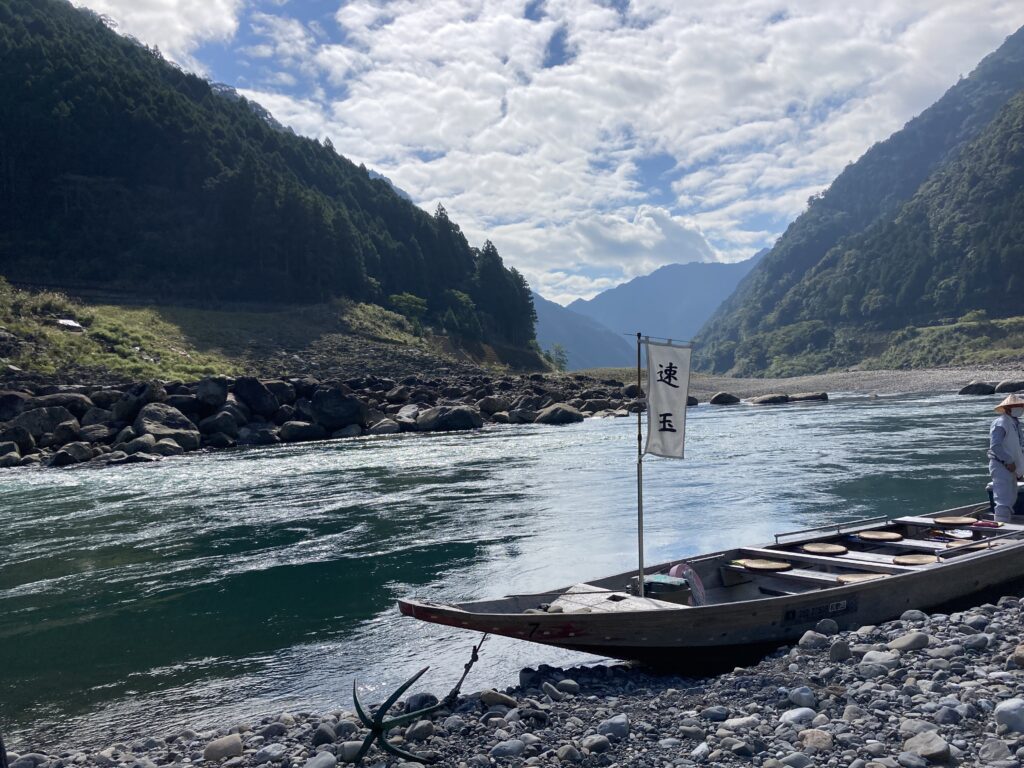
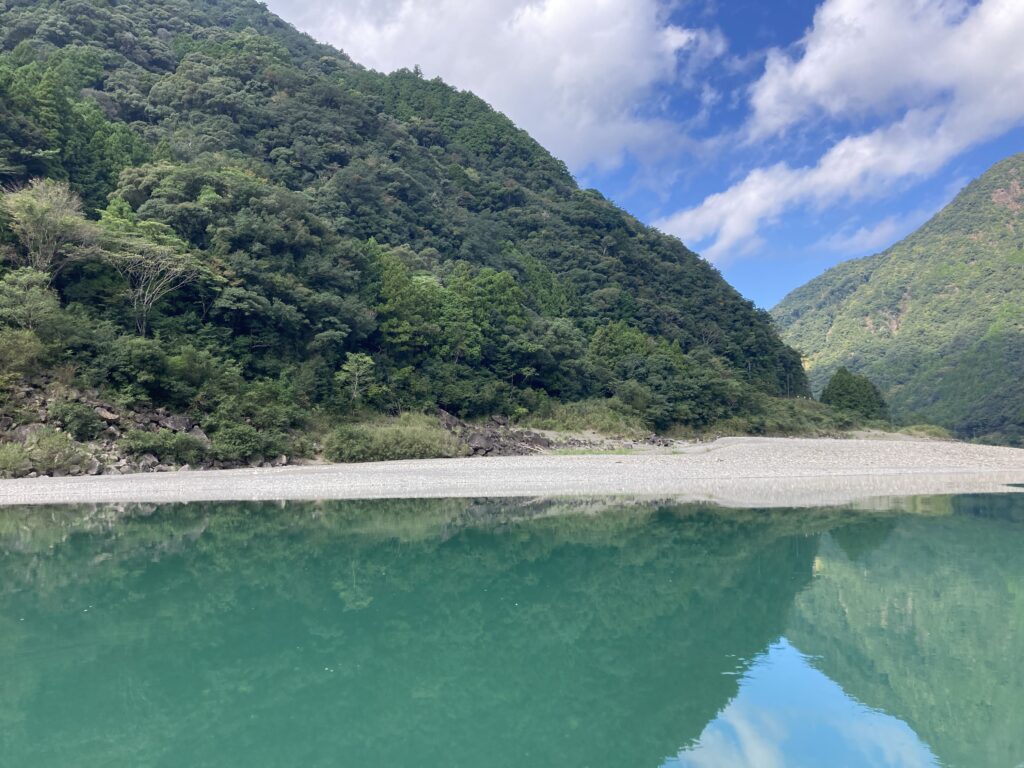
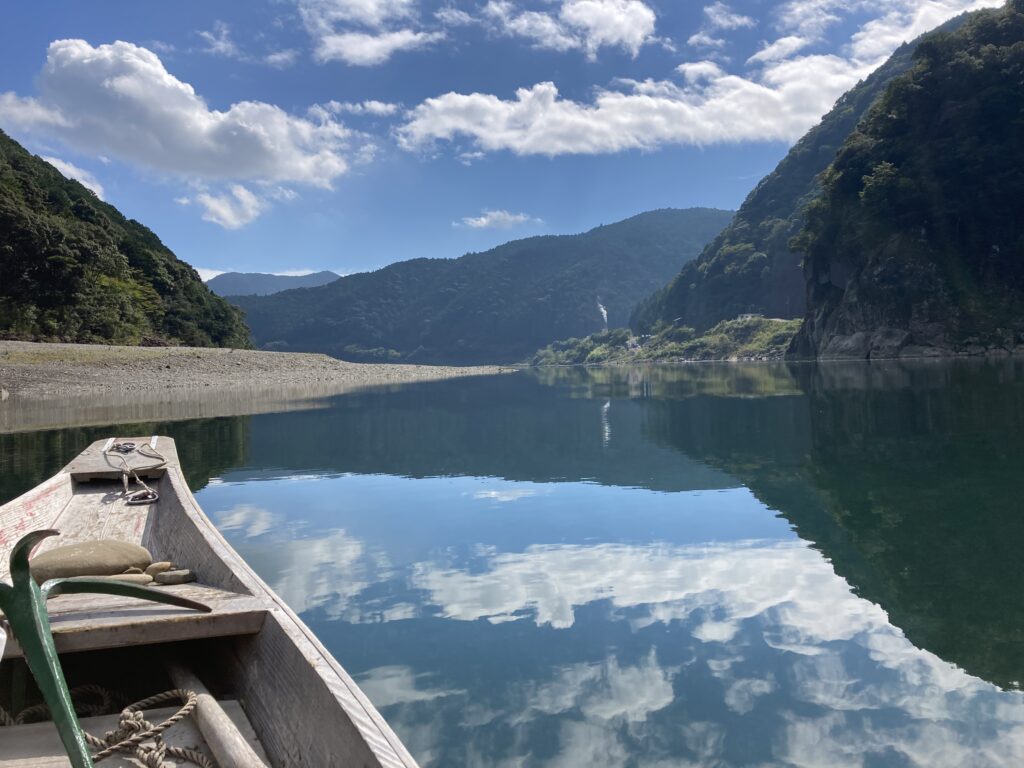
川舟下りでは船頭さんがこの辺りの土地や歴史のお話をしてくれたり、伝統的な笛を演奏してくれたりと風情ある時間を過ごすことができる。
そうして熊野速玉大社まで、ほとんど歩くことなく到着することができた。
During the boat ride, the boatman told us about the land and history of the area, and played a traditional flute for us to enjoy.
In this way, we were able to reach Kumano Hayatama Taisha Shrine without much walking.
熊野速玉大社は、その摂社である神倉神社のゴトビキ岩に降臨した熊野権現を勧進するためにこの地に造営されたとも言われ、熊野速玉大神は生命の根源である水の動きを神格化したものとも考えられていている。ちなみに「ゴトビキ」はこの地でのヒキガエルの方言名で、確かにヒキガエルを彷彿とさせる巨石が神体として祀られている。
この神倉神社のゴトビキ岩は、熊野権現が熊野三山として祀られる以前に一番最初に降臨された聖地と言われている。
It is said that the Kumano Hayatama Taisha shrine was built here to worship the Kumano Gongen who descended from the Gotobiki rock at the Kamikura Shrine, a branch shrine of the Kumano Hayatama Taisha, and it is believed that the movement of water, the root of life, was deified there. For your information, “Gotobiki” is the dialect name for toad in this area, and indeed, a huge stone reminiscent of a toad is enshrined as the deity’s body.
This Gotobiki Rock at Kamikura Shrine is said to be the first holy place where Kumano Gongen descended before it was enshrined as Kumano Sanzan.
そして我々が訪れたこのタイミングは、国の重要無形民俗文化財に指定されている熊野速玉大社の例大祭「熊野速玉大祭」(毎年10月15、16日)。コロナ禍のため、祭りを締めくくる神事・御船祭やお焚き上げを見ることはできなかったが、古来より綿々と祈りを捧げてこられたこの儀式にはやはり神聖さを感じた。
The timing of our visit was the Kumano Hayatama Grand Festival (October 15 and 16 every year), an annual festival of the Kumano Hayatama Taisha Shrine, which is designated as an Important Intangible Folk Cultural Property of Japan. Because of covit-19, we were not able to see the rituals that conclude the festival, such as the Mifune-Sai and the burning of the ashes, but I still felt the sacredness of these rituals, which have been dedicated to prayers since ancient times.
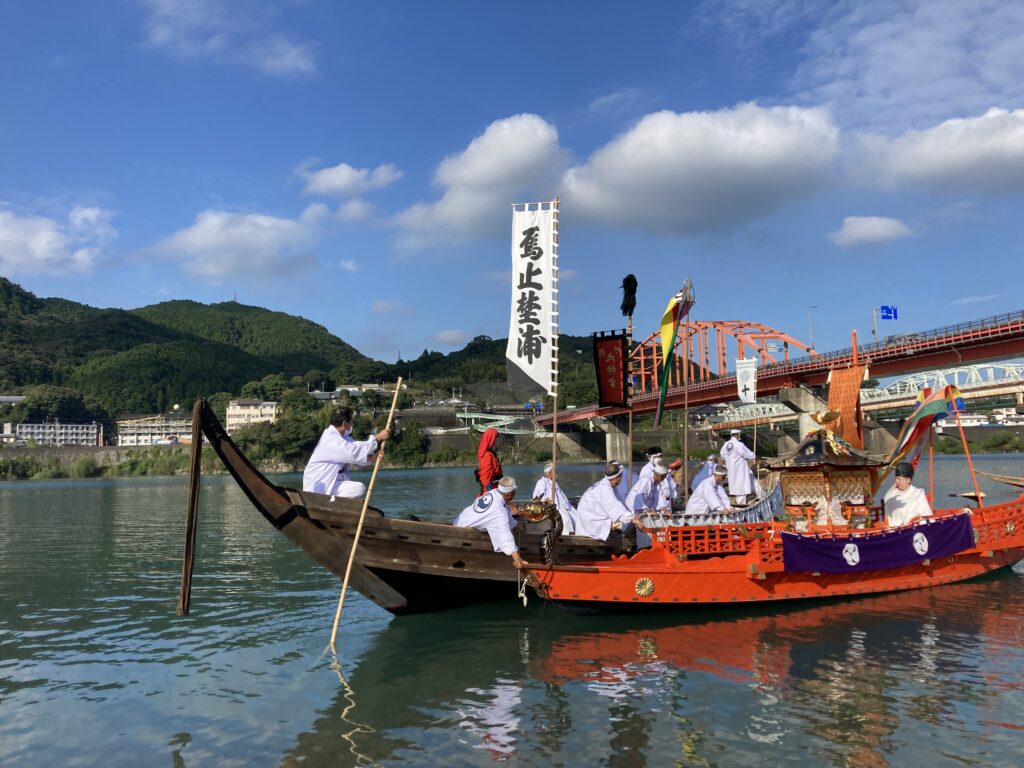
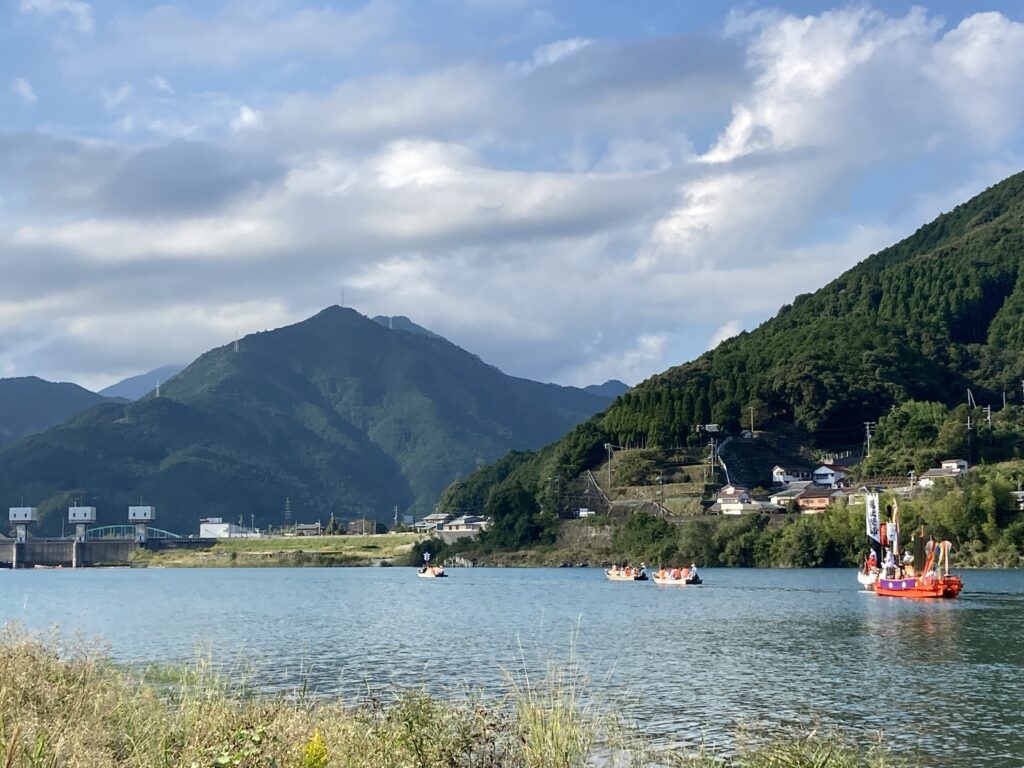
そしてその神が最初に降臨したとされる神倉神社とゴトビキ岩。
And the Kamikura Shrine and Gotobiki Rock, where the god is said to have first descended.
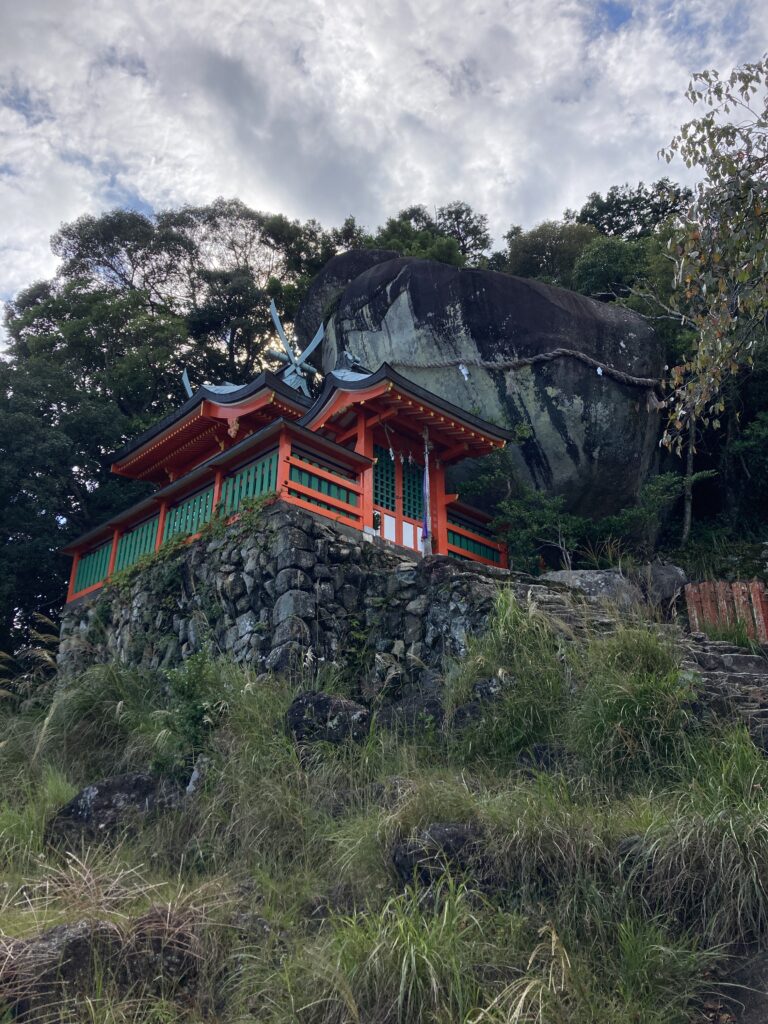
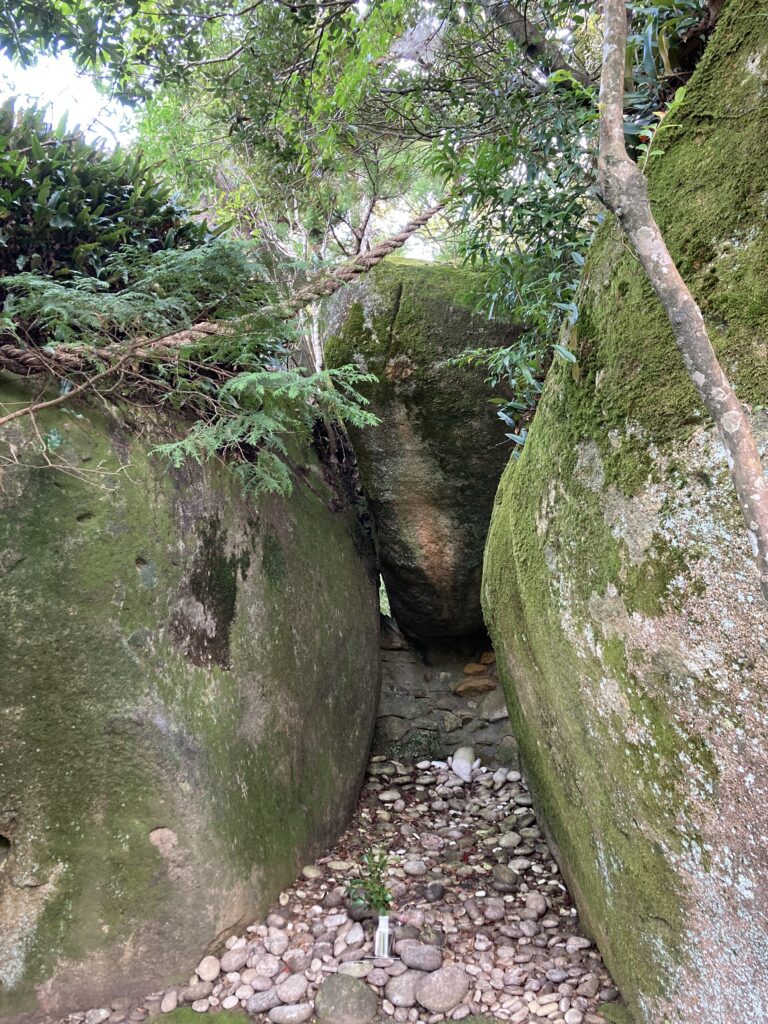
源頼朝が寄進したという、自然石で組み上げられた非常に急な階段538段を登った先にあり、そこからの眺めも素晴らしい。
It is located at the top of a very steep staircase with 538 steps made of natural stone, which was donated by Minamoto no Yoritomo, and the view from there is wonderful.
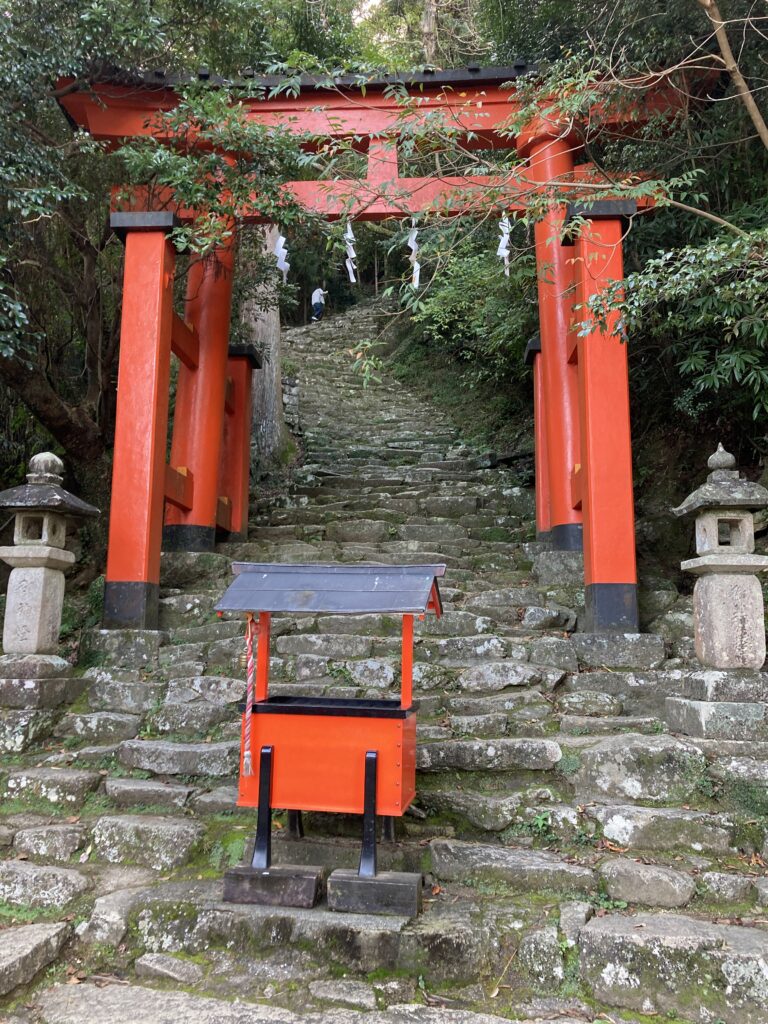
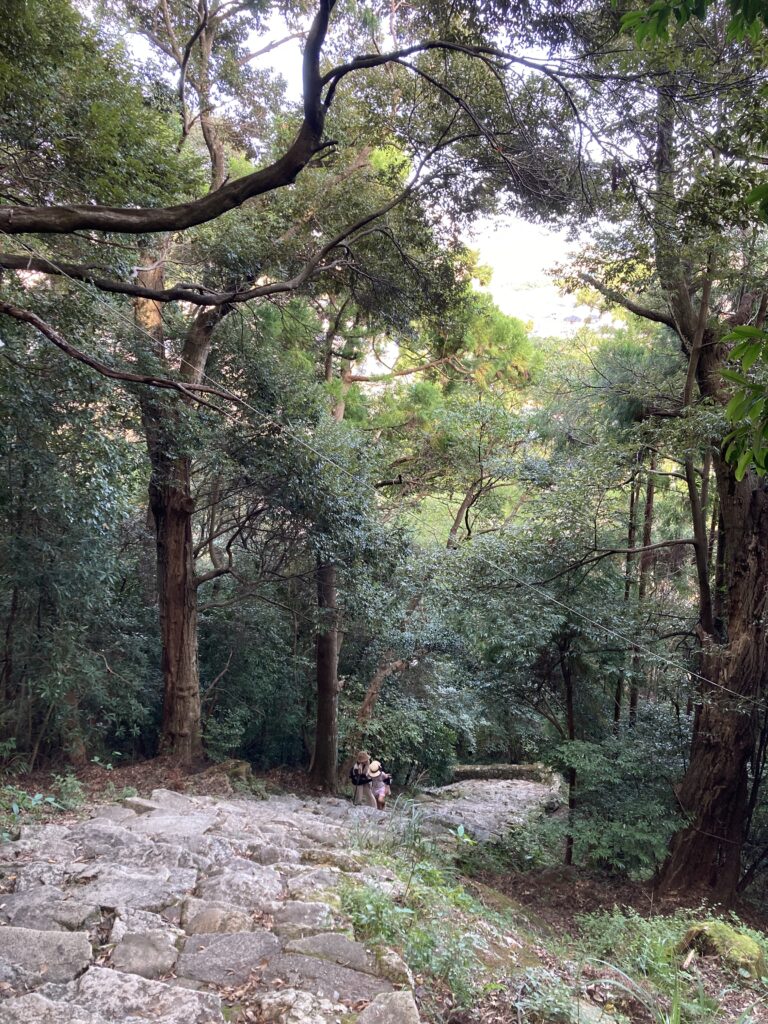
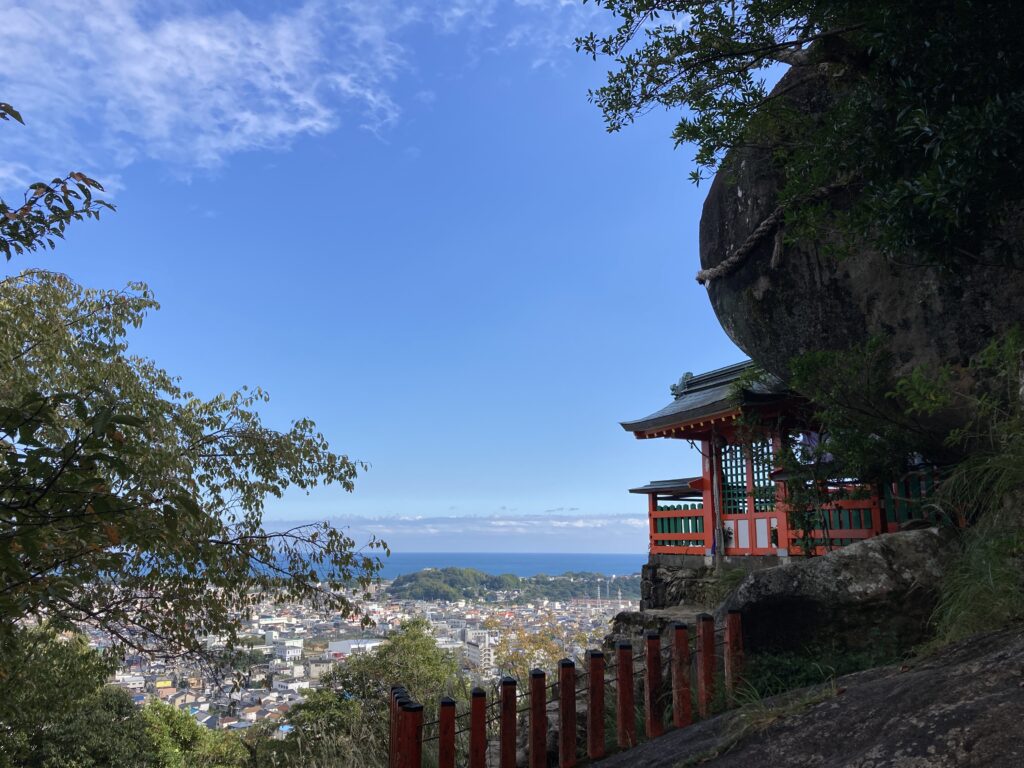
新宮には他にも見所がたくさん存在するので時間をとって観光するのも良いだろう。
舟で川を下った我々は午前中には到着したため、それらをしっかりと観光することができたので、それらの一部を紹介しておこう。
There are many other places to see in Shingu, so it would be a good idea to take some time for sightseeing.
Since we arrived in the morning, we were able to take a good look at some of them, so I will introduce some of them to you.
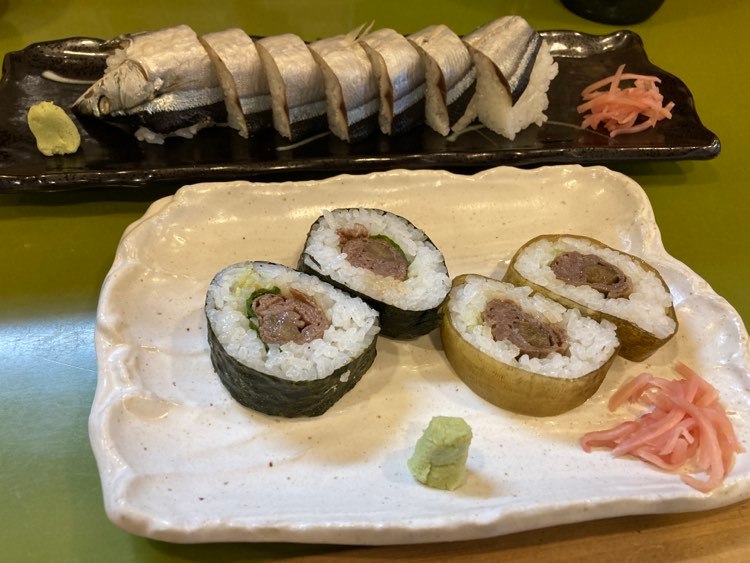
名物の1本の姿まんまのさんま寿司は、昔から祭りや正月料理など一般家庭で作られてきたなじみ深いお寿司で、保存食から発展した料理といわれ、熊野地方では1500年以上もの歴史がある。
Sanma-zushi, one of the specialties here, in its original form, is a familiar sushi dish that has been made in households for festivals and New Year’s dishes since ancient times, and is said to have evolved from a preserved food, with a history of over 1,500 years in the Kumano region.
下の太巻きはこの時一緒に頼んだこのお店のもう一つの名物、和歌山県の特産高級和牛である熊野牛ののり巻と昆布巻。
The rolls below are Norimaki (seaweed rolls) and Kombu (kelp rolls) of Kumano beef, a specialty of Wakayama Prefecture and another specialty of this restaurant.
平成28年(2016年)に世界遺産に追加登録された阿須賀神社。古くから熊野三山の神を祀り、平安時代から「阿須賀王子」とされたその境内からは弥生時代の竪穴住居跡や祭祀用具も見つかっており、さらに古代から聖地であったとも考えられる。
In 2016, Asuka Shrine was added to the World Heritage List.
The shrine has been dedicated to the deities of Kumano Sanzan since ancient times, and has been called ” Asuka Oji” since the Heian period (794-1185). In its precincts, traces of pit houses and ritual tools from the Yayoi period have been found, suggesting that it has been a sacred place since ancient times.
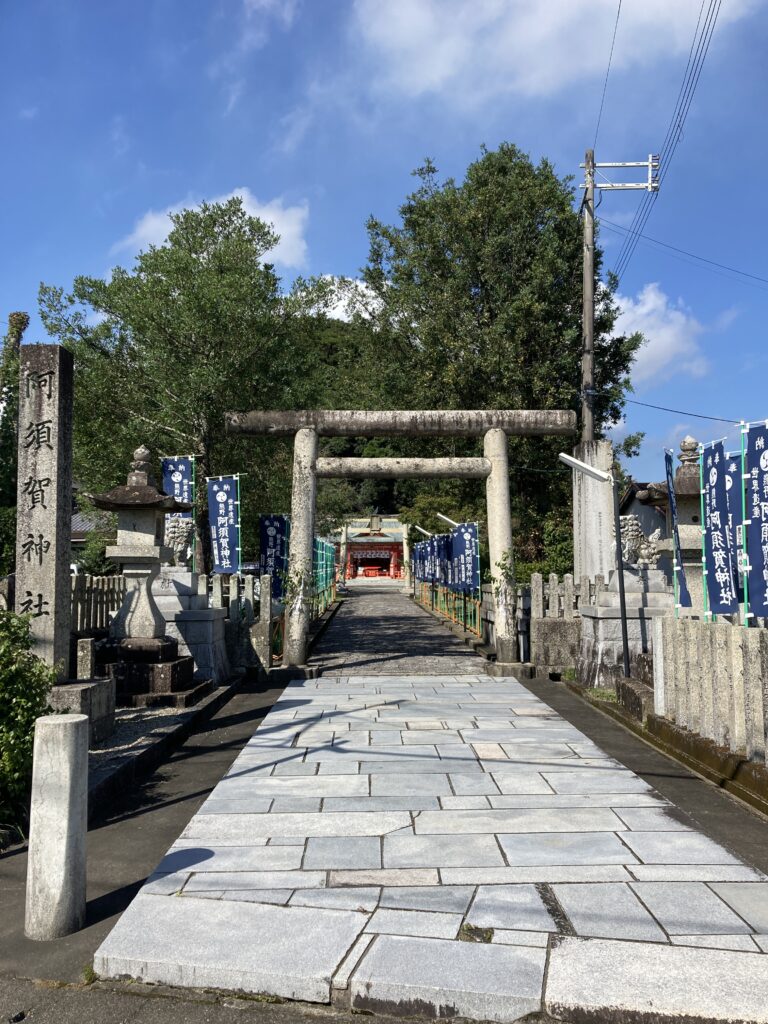
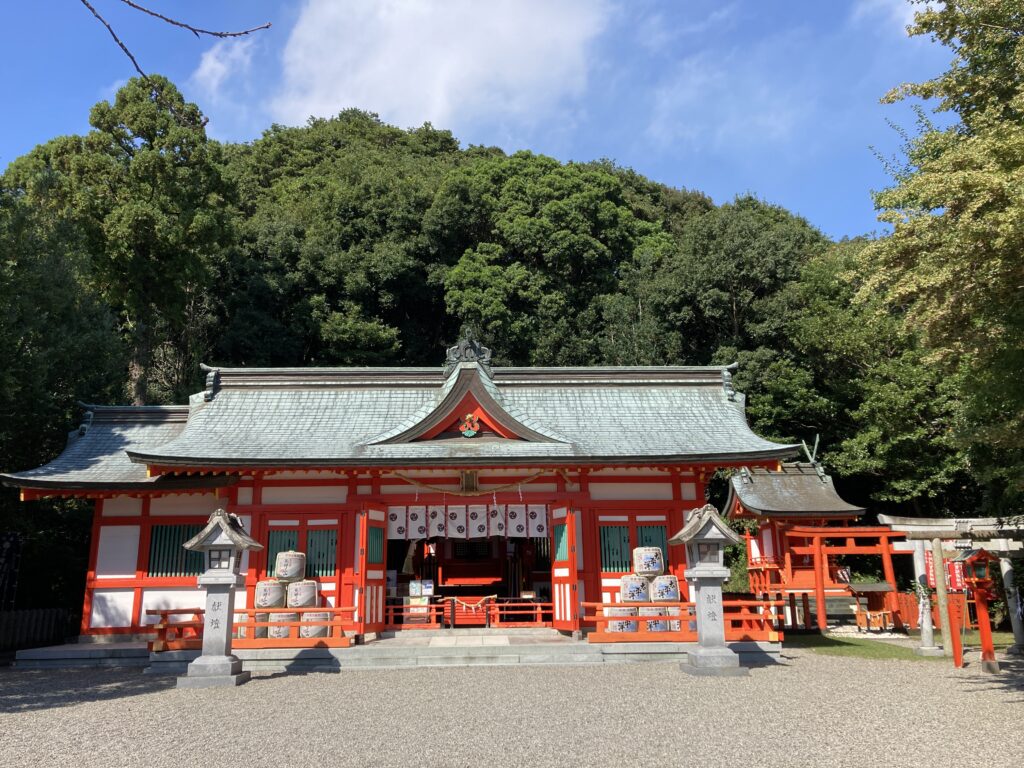
元々は源為義の娘である丹鶴姫の住まいであったことから「丹鶴城」とも呼ばれている。
It is also called “Tankaku Castle” because it was originally the home of Princess Tankaku, the daughter of Minamoto no Tameyoshi.
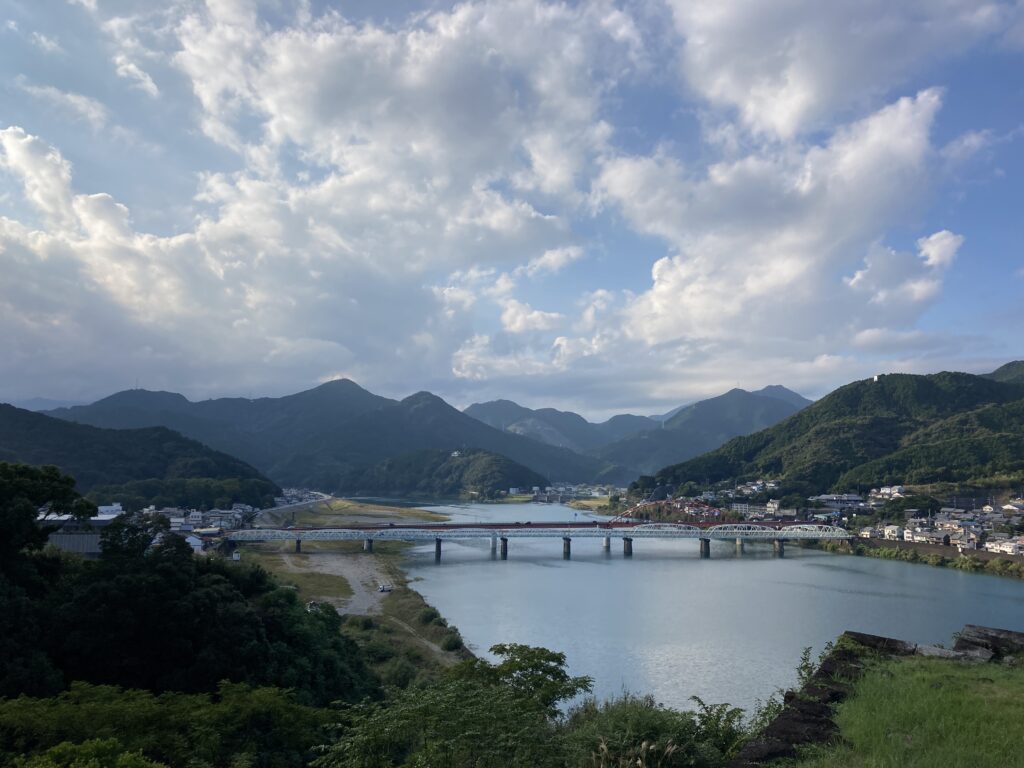
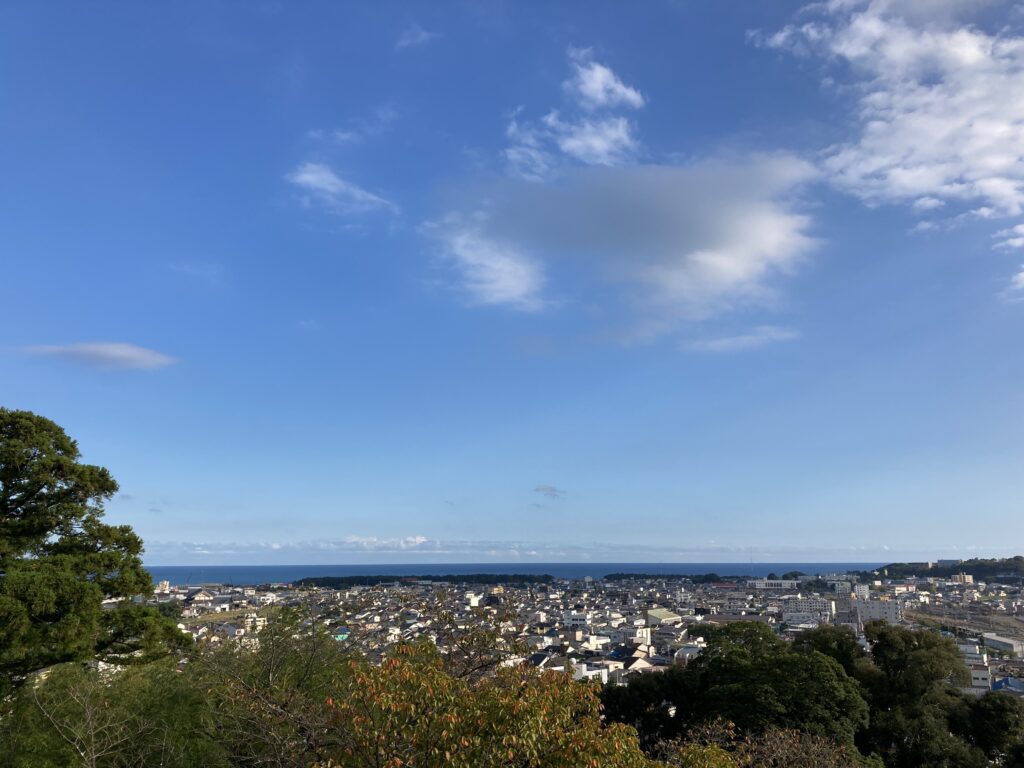
三重県熊野市まで伸びる七里御浜の一部であり、約4kmに渡って海岸線沿いに熊野古道が続いている。神事の祓いごとの場でもあり、神聖な場所として知られている。
It is part of the Shichiri-Mihama beach stretching to Kumano City in Mie Prefecture, and the Kumano Kodo follows the coastline for about 4km. It is also known as a sacred place for ritual purification.
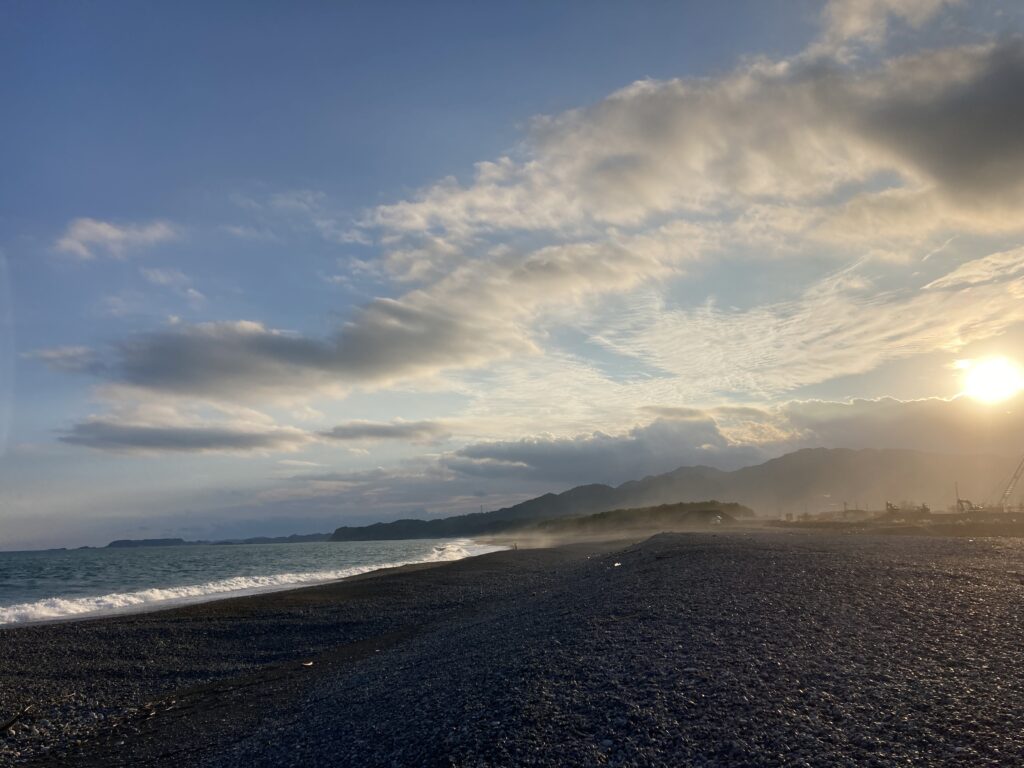
目指すは熊野三山、最後の目的地、熊野那智大社。
前日に時間をかけて観光していたので、すでに見た新宮城跡、阿須賀神社、浜王子の先まではサクッと早歩きして、この日の古道らしい道行は海沿いの高台を越えていく約1.5kmの高野坂から。
Our goal was to reach the last of the three Kumano mountains, Kumano Nachi Taisha Shrine.
Since we had spent a lot of time sightseeing the day before, we walked quickly past the Shingu Castle Ruins, Asuka Shrine, and Hama Oji, which we had already seen. This day’s ancient road-like trail started from Koya-zaka, about 1.5 km long, which crossed the highland along the sea.
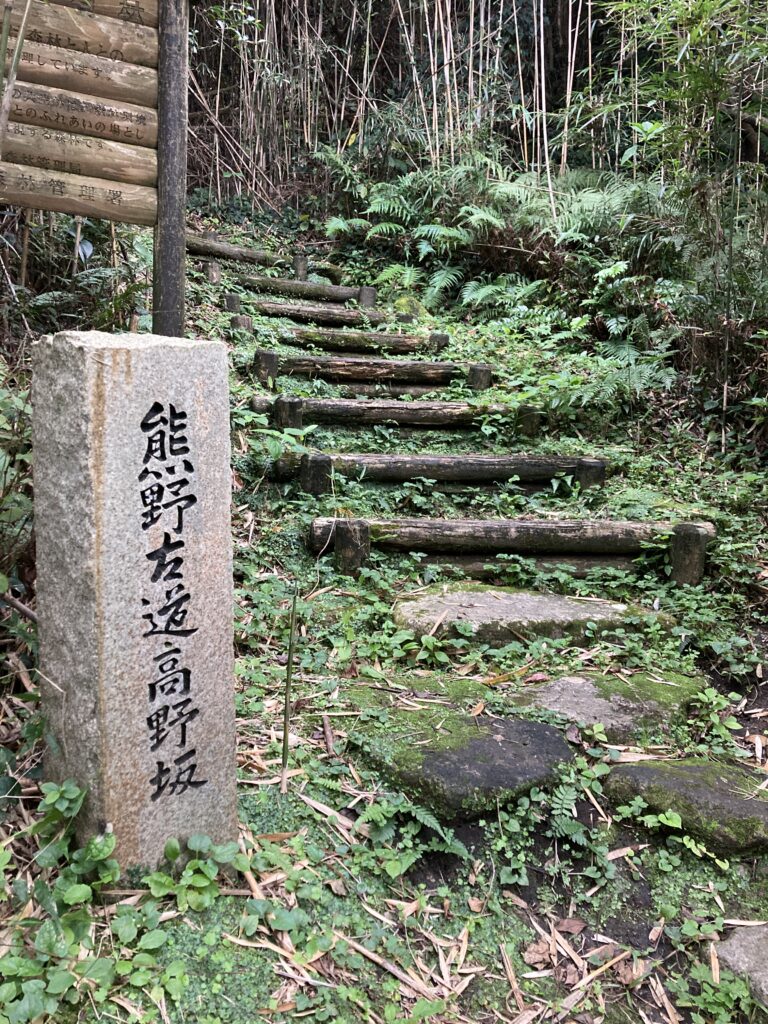
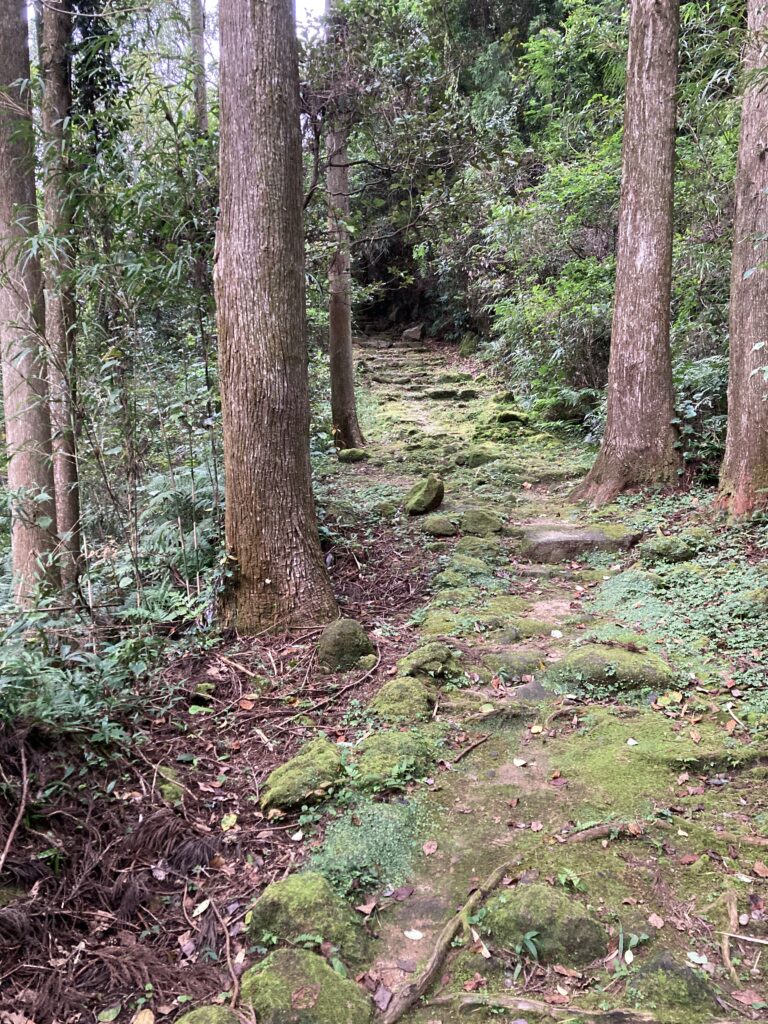
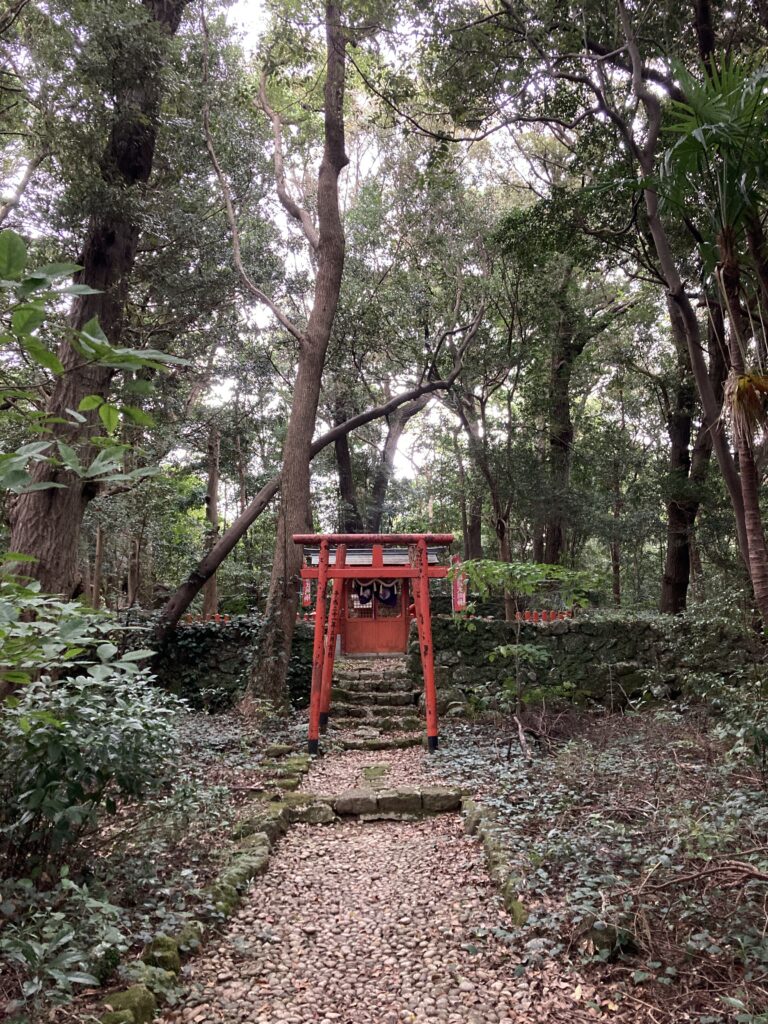
御手洗念仏碑や孫八地蔵、五輪塔、金光稲荷神社、捕鯨見番所などを見ながら峠を下れば三輪崎の海岸線に出る。
As we descended the pass, we saw the Mitarai Nembutsu monument, Magohachi Jizo, the five-ring pagoda, Konko Inari Shrine, and the whaling watchtower, and reached the Miwazaki coastline.
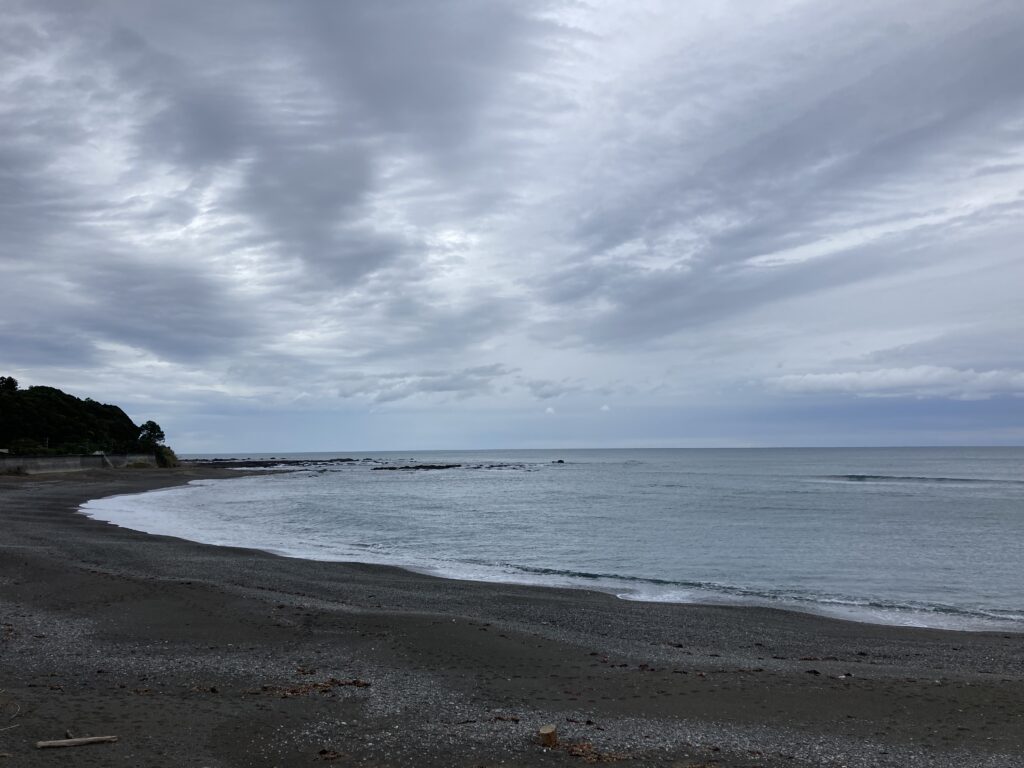
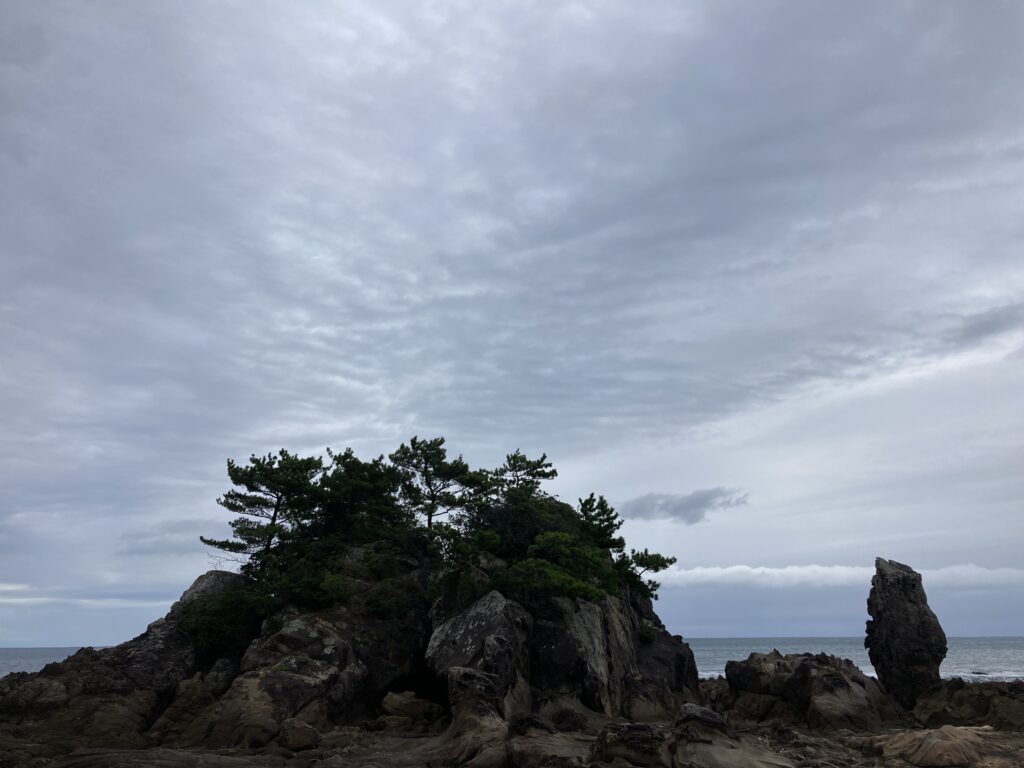
ここから那智までは国道歩きが多く、一部は山の古道に入るものの人気もなくあまり整備もされていないため、三輪崎駅から那智駅までは電車でもよいだろう。
我々は迷うことなくその先へ、集落の中の分かりにくい細い道を抜けて国道をひた歩く。
From here to Nachi, there is a lot of walking on the national road, and some of it goes into the old mountain road, but it is not popular and not well maintained, so you can take the train from Miwazaki Station to Nachi Station.
Without hesitation, we went ahead and walked along the national highway, passing through an obscure narrow road in the village.

佐野王子を越え、途中で小狗子峠、大狗子峠という国道から逸れた短い山道を登り下りして、さらに車に気をつけながら国道をゆき、浜の宮王子が見えればようやく那智駅。これだけでも約15km。
After crossing the Sano Oji, we climbed and descended a short mountain road that deviated from the national highway, called Kokuji Toge and Ohkuji Toge, and then continued on the national highway, being careful to avoid cars, and finally reached Nachi Station when we saw the Hamanomiya Oji. This alone is about 15km.
熊野那智大社まではここから緩やかに標高を上げながらさらに約7.5km、2時間ほど。
駅のロッカーに重いザックを預けて必要な分だけの行動食と財布、携帯だけという最低限の荷物にしぼり身を軽くして那智大社を目指す。
From here, it was another 7.5km or 2 hours to Kumano Nachi Taisha with a gradual rise in elevation.
We left our heavy packs in a locker at the station and set off for Nachi-taisha with only the bare minimum of food, wallets, and cell phones.
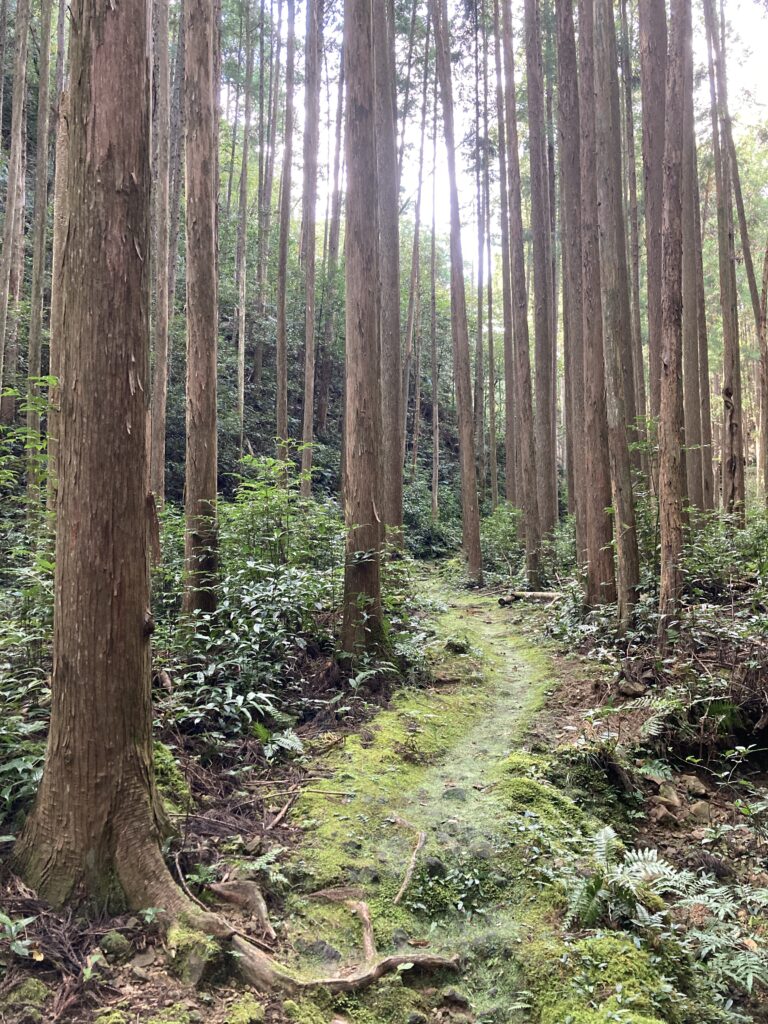
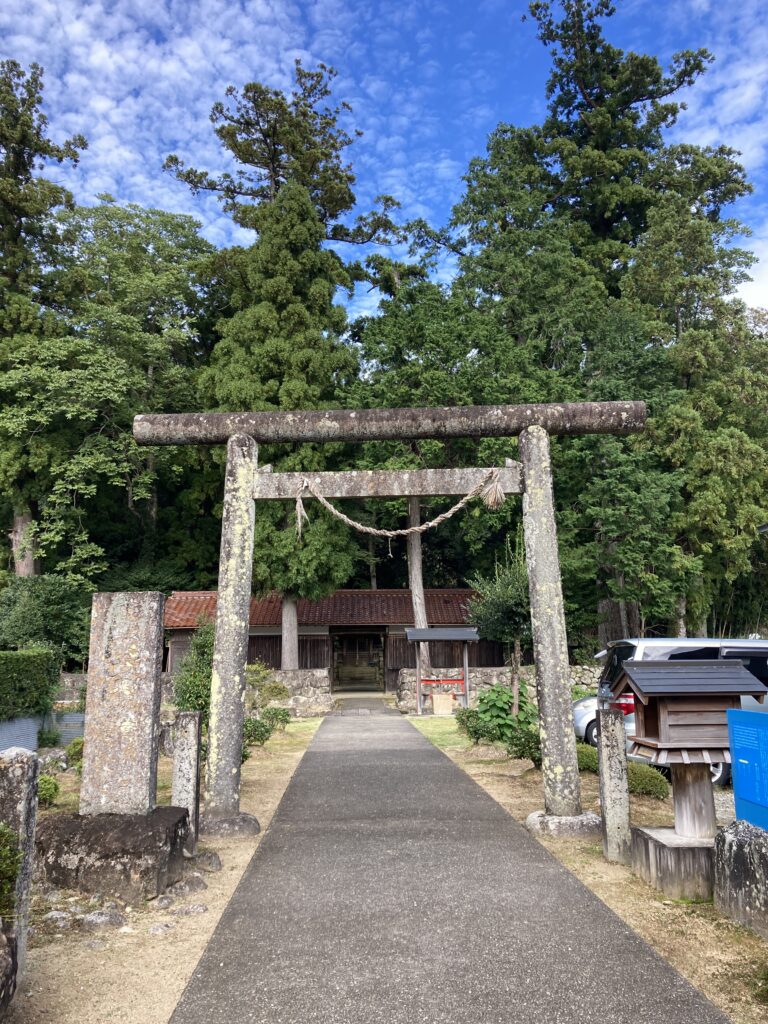
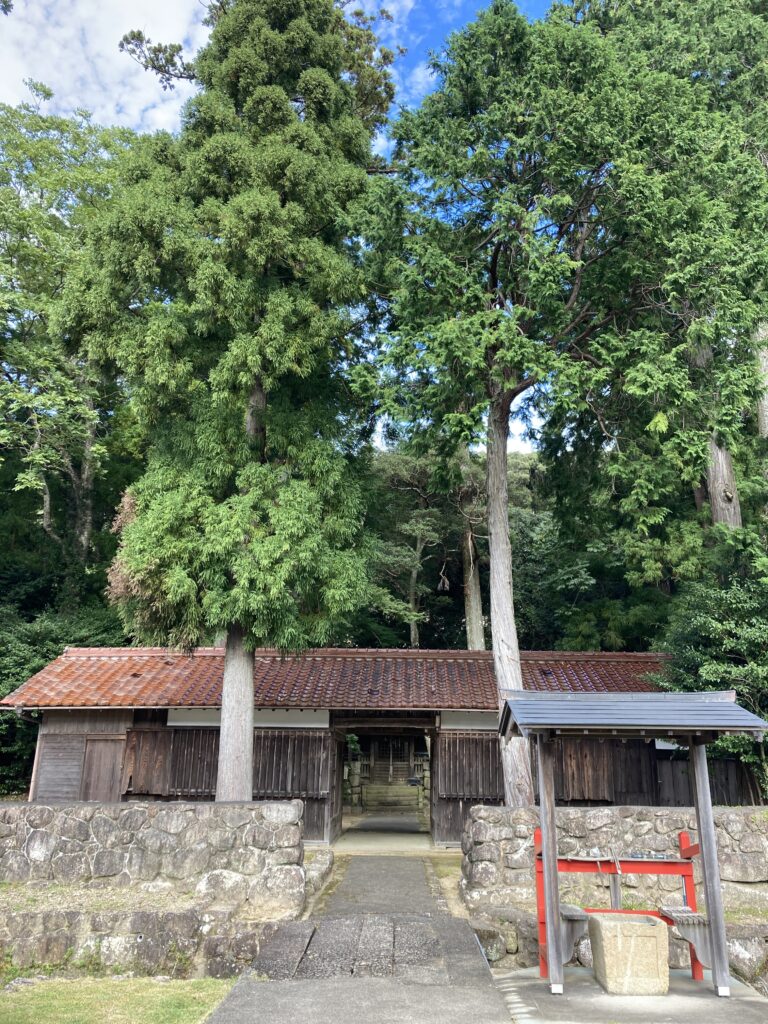
市野々王子を経て、ようやく大門坂に。熊野古道の中でも、当時の面影を特に美しく残している「大門坂」。
鳥居をくぐり、振ヶ瀬橋という小さな橋を渡れば、
After Ichinono Oji, finally, we reached Daimonzaka. This is one of the most beautiful parts of the Kumano Kodo, and it still retains its original appearance.
If you pass through the torii gate and cross the small bridge called Furigasebashi, you will see…
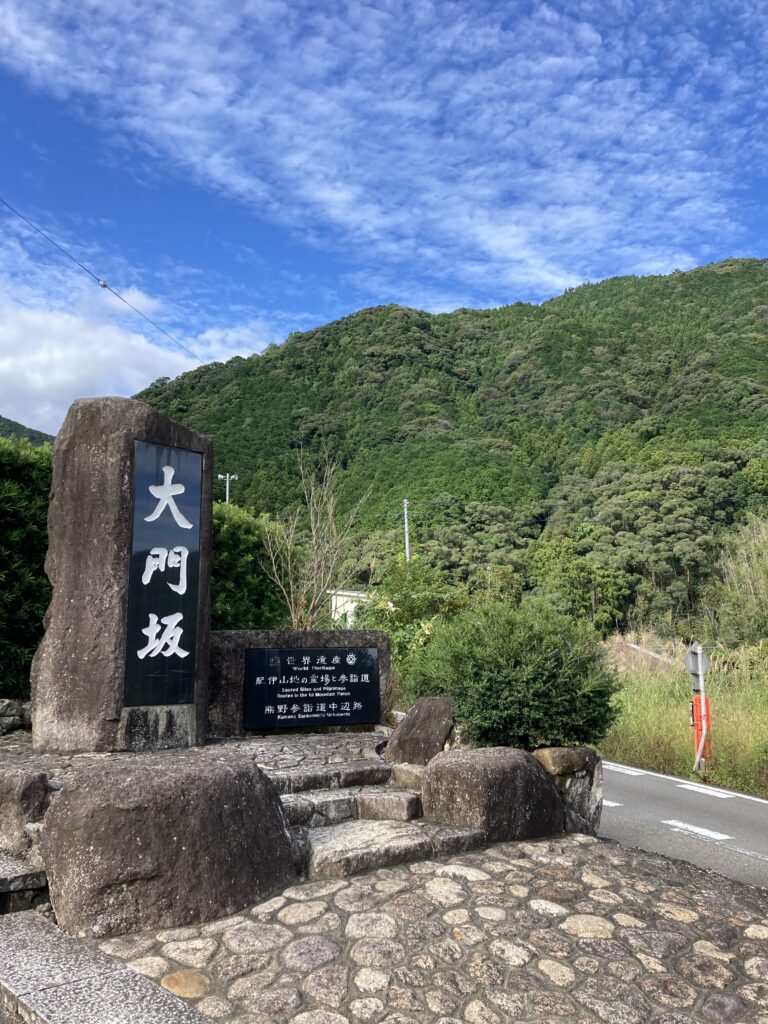
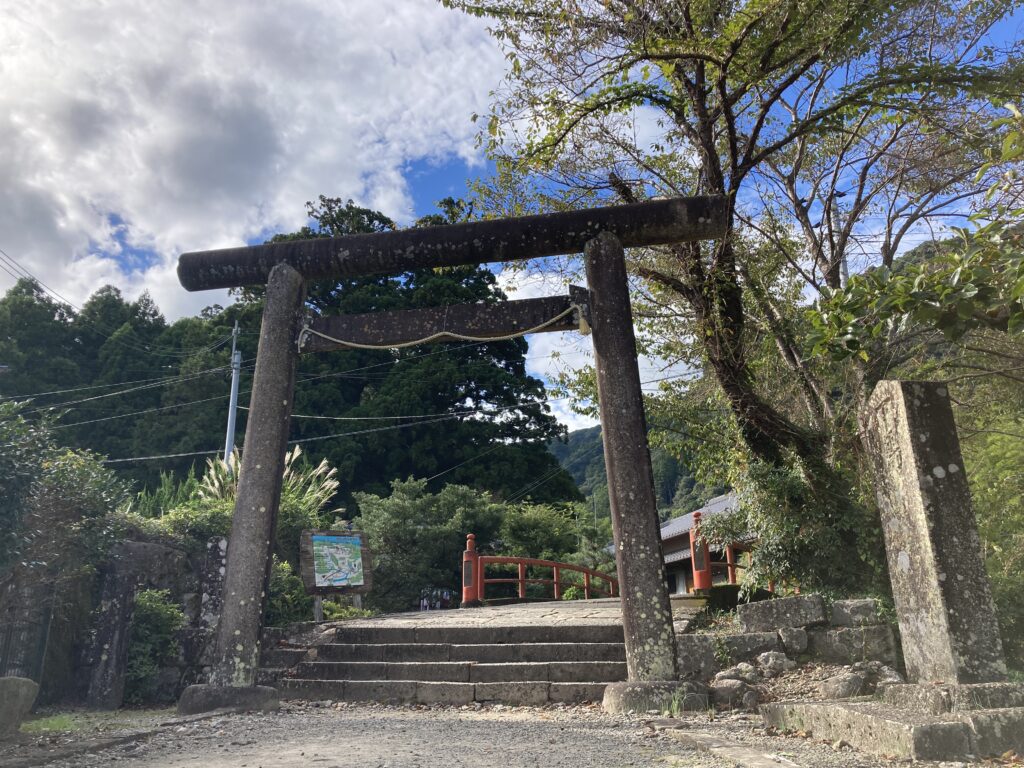
聖地「那智山」へと続く約640mの石畳が現れる。
樹齢800年を越す老杉の巨木の立ち並ぶ苔むした石段からは往古の熊野詣が偲ばれる。
A 640-meter-long stone pavement leading to the sacred site of Mt, Nachi appears.
The mossy stone steps lined with giant cedar trees over 800 years old remind us of the Kumano pilgrimage in ancient times.
多富気王子を過ぎて石段を登り切れば、熊野三山最後の聖地、熊野那智大社が見えてきます。
After passing the Tafuke Oji and climbing up the stone steps, you will see the Kumano Nachi Taisha, the last of the three holy shrines of Kumano.
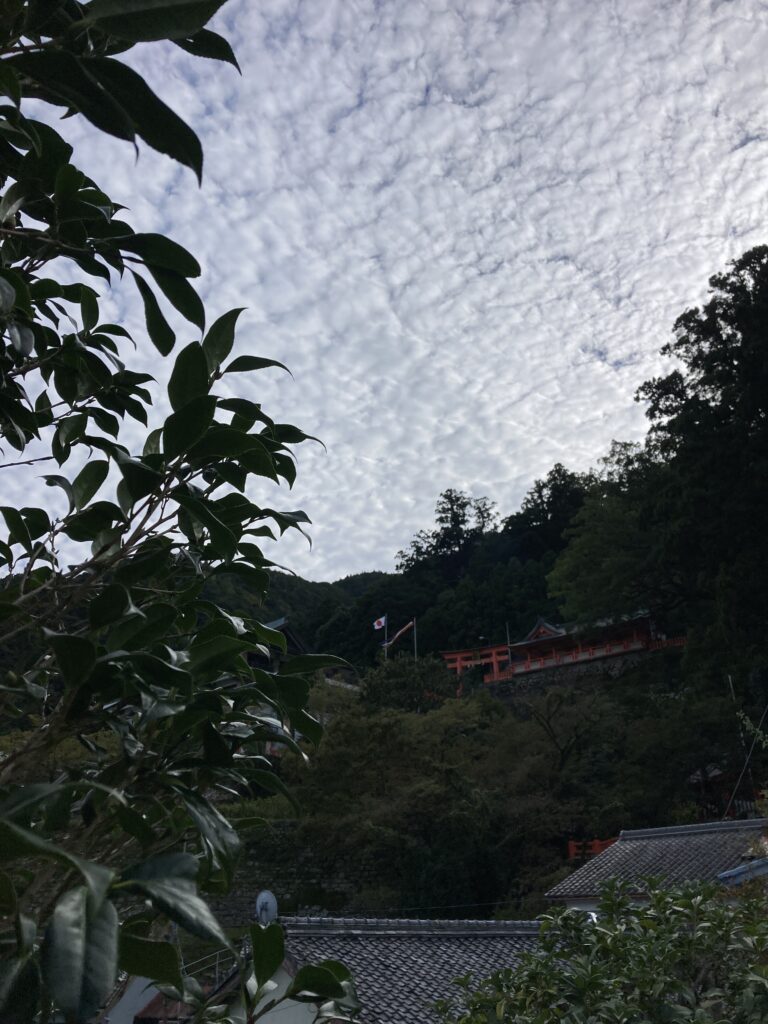
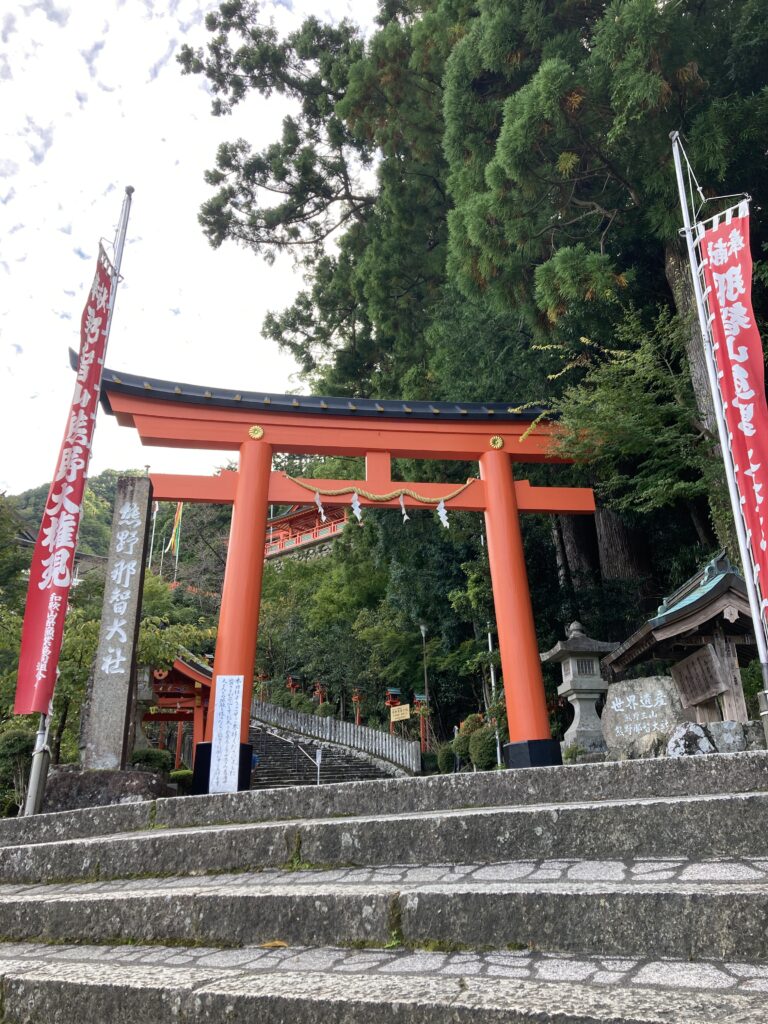
那智山の中腹に鎮座し、那智大滝(那智の滝)に対する原始の自然崇拝を起源とする神社はまるで空中都市のよう。
The shrine, which sits in the middle of Mt. Nachi and has its origins in the primitive nature worship of Nachi Otaki (Nachi Falls), is like an aerial city.
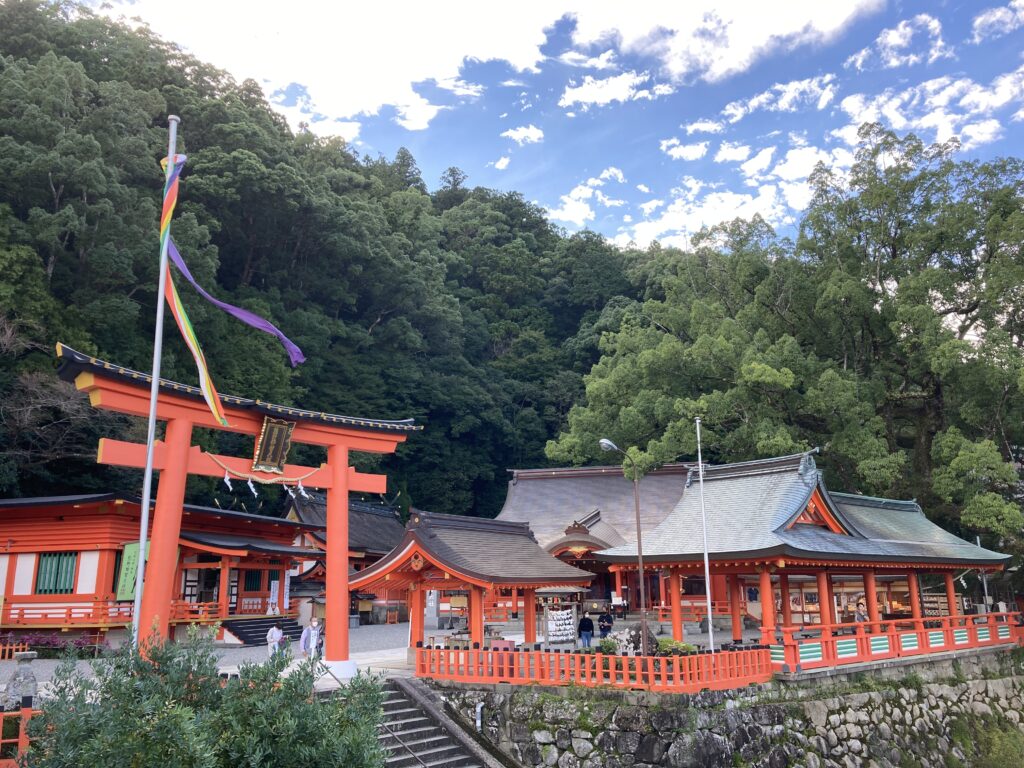
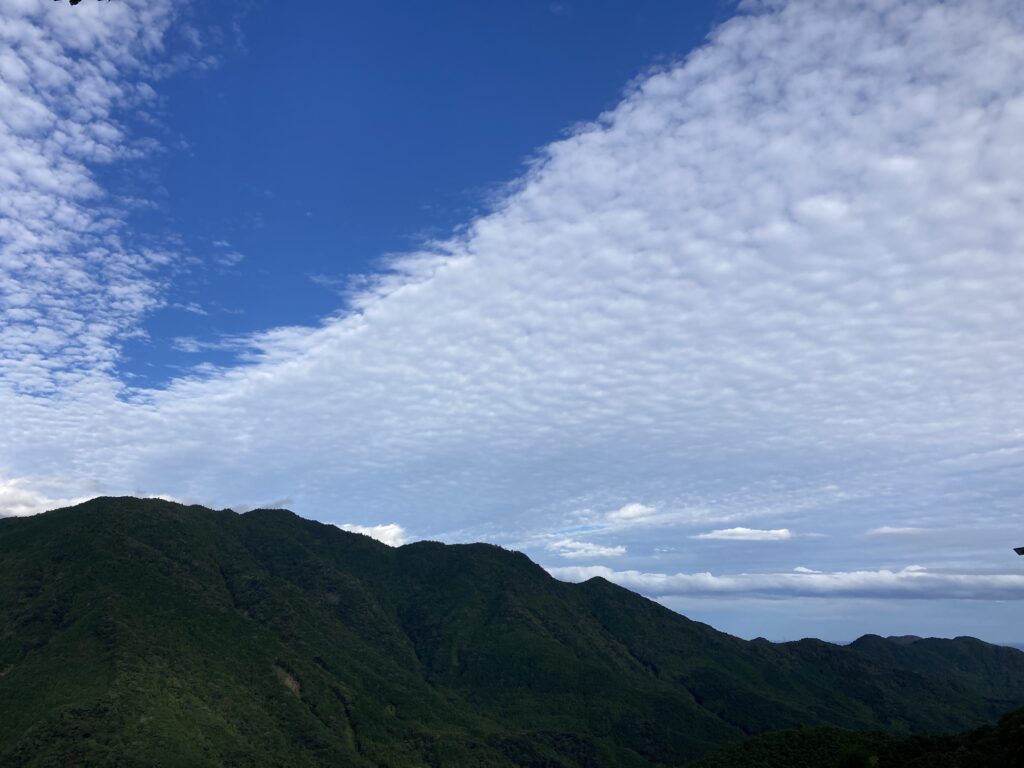
神仏習合の過程で、熊野那智大社と密接な関係を持つようになった寺院「青岸渡寺」は西国三十三所霊場の第一番札所でもある。
Seigantoji Temple, which came to be closely associated with Kumano Nachi Taisha Shrine in the process of Shinto-Buddhist syncretism, is also the first temple of the 33 sacred places in the western Japan.
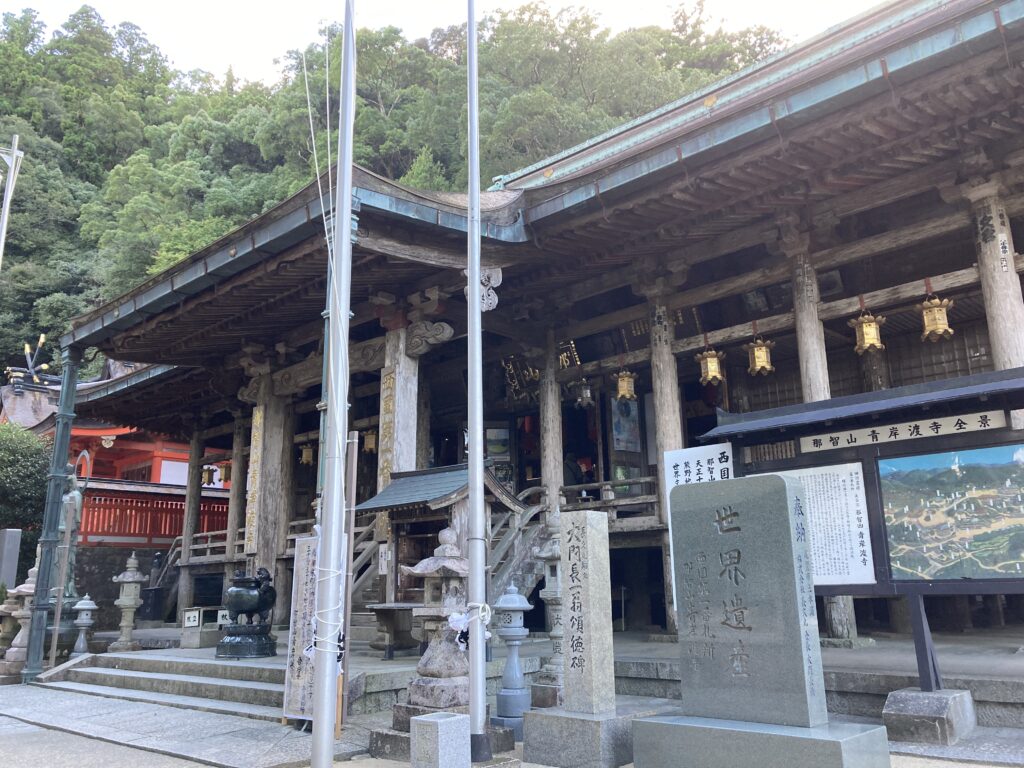
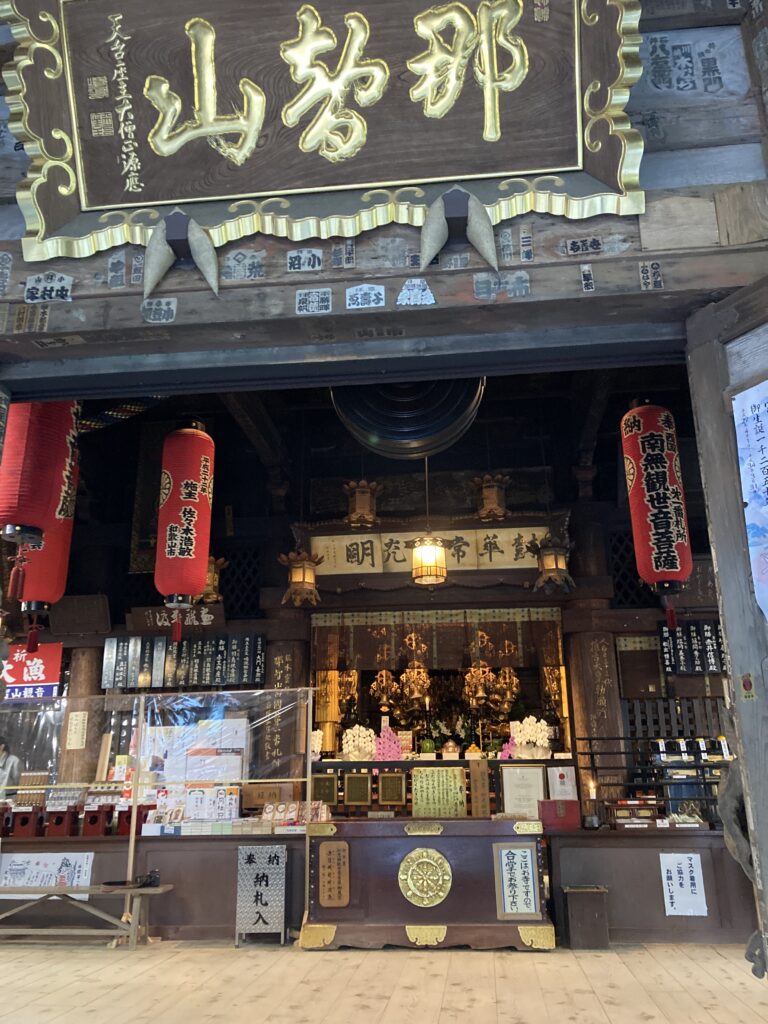
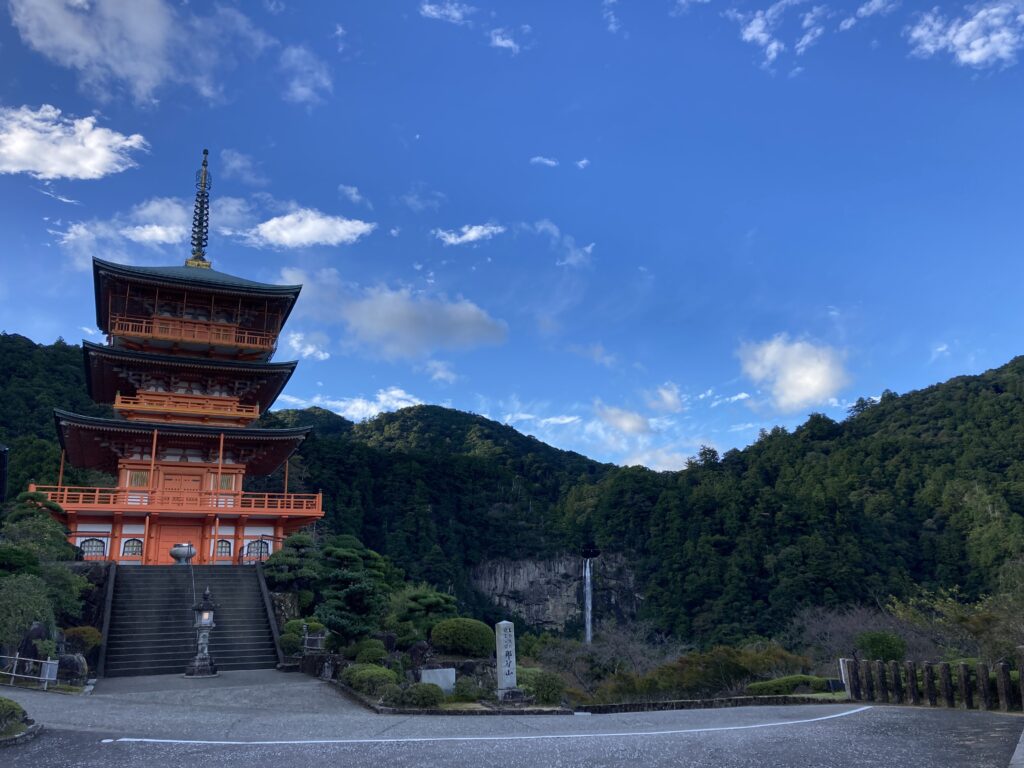
落差133m、銚子口の幅13m、滝壺の深さは10mの名瀑で、落差日本一の「那智の滝」は那智大社の信仰の起源で、太古から神として崇められ、熊野那智大社別宮飛瀧神社のご神体そのものとされている。
With a drop of 133 meters, a width of 13 meters at the mouth of the waterfall, and a depth of 10 meters at the bottom of the waterfall basin, the Nachi Waterfall, the largest waterfall in Japan, is the origin of the beliefs of Nachi Taisha Shrine, and has been worshipped as a god since ancient times, and is considered to be the very body of the deity of Tobitaki Shrine, a separate shrine of Kumano Nachi Taisha Shrine.
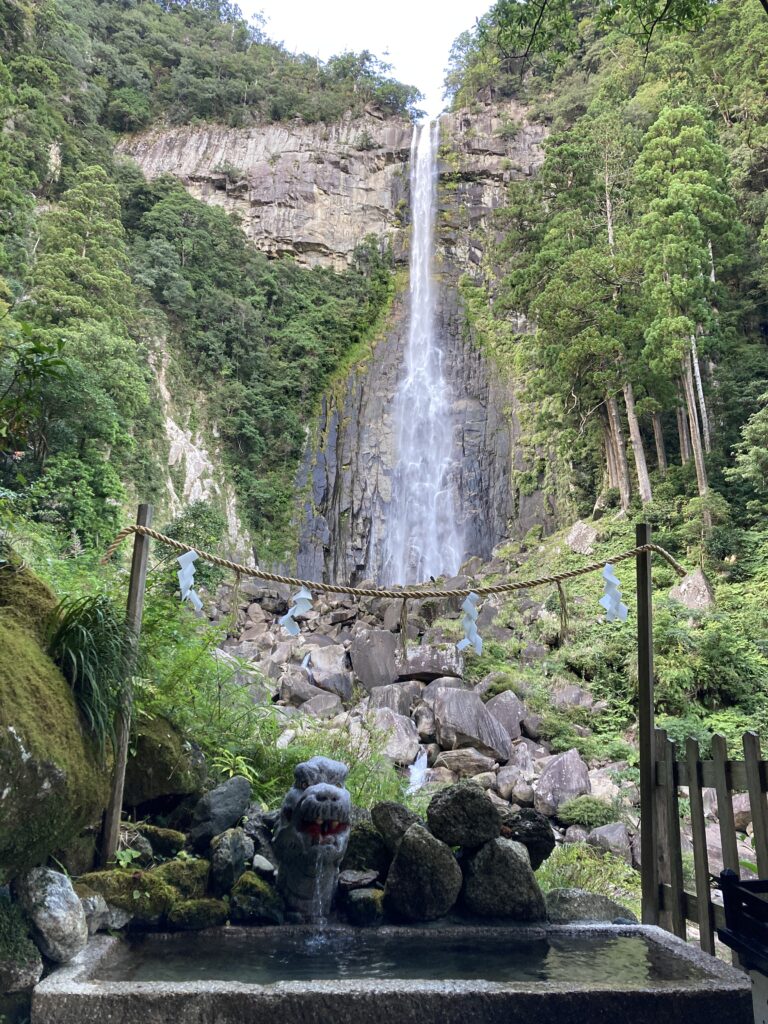
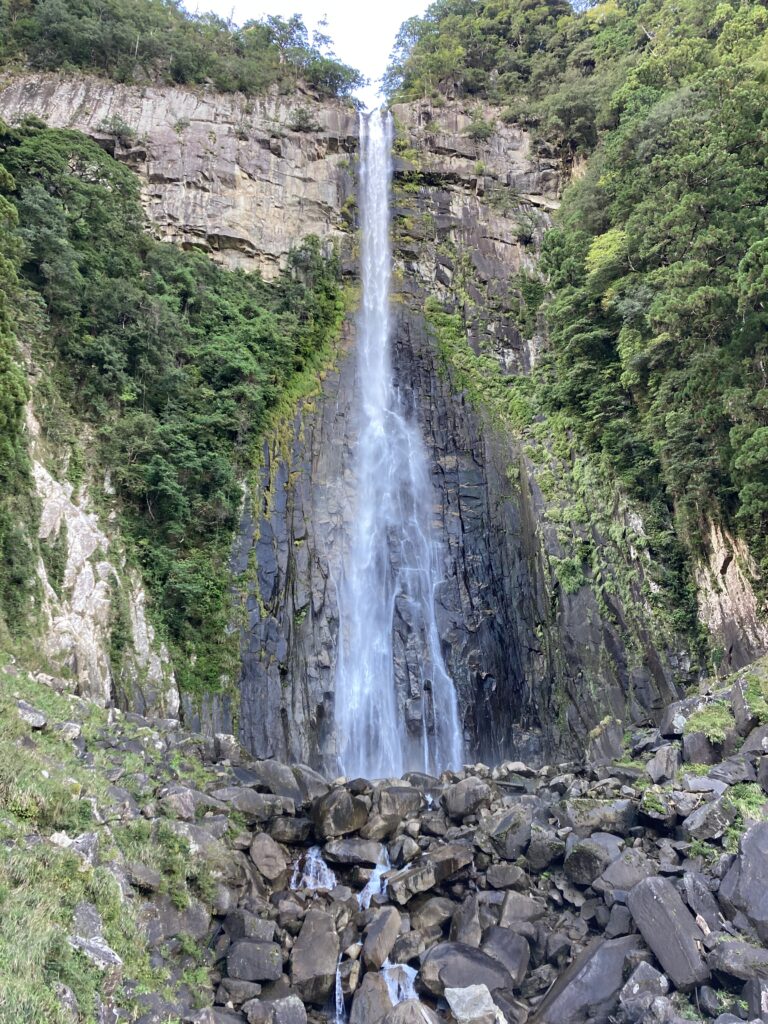
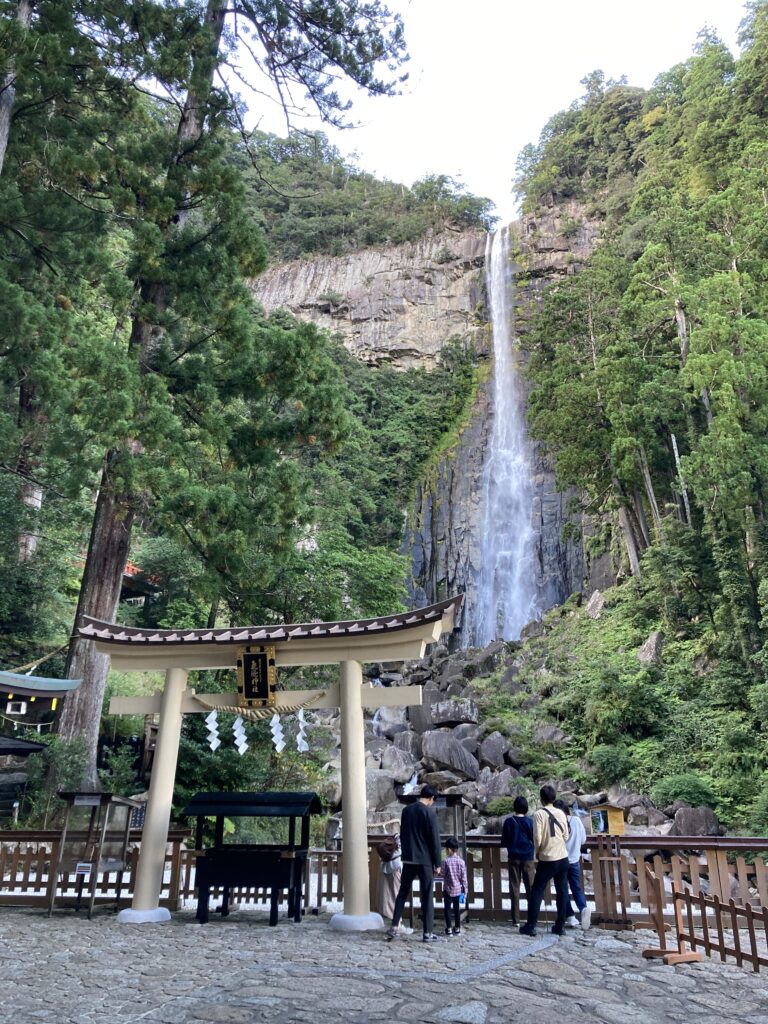
すでにご紹介したように那智の滝が熊野那智大社のご神体であるように、熊野速玉大社は神倉山にあるゴトビキ岩、熊野本宮は周囲の川や川洲を御神体としており、滝・岩・川がそれぞれの神として祀られている。
さらに速玉は過去、那智は現在、本宮は未来を表すと言われており、過去を癒し、現在の恐れや不安をなくし、未来の喜びを創造することから「甦り、再生の聖地」とされている。それが熊野三山である。
Just as Nachi Falls is the deity of Kumano Nachi Taisha Shrine, as already mentioned, Kumano Hayatama Taisha Shrine has Gotobiki Rock on Mt. Kamikura, and Kumano Hongu has the surrounding rivers and riverbeds as its deities.Waterfalls, rocks, and rivers are enshrined as their respective deities.
Furthermore, Hayatama is said to represent the past, Nachi the present, and Hongu the future, making Kumano a “sacred place of rebirth and renewal” because it heals the past, eliminates fear and anxiety in the present, and creates joy in the future. These are the three Kumano mountains.
6日間をかけて歩いた距離、実に約80km。熊野三山全てをこうして無事に歩き終えました。
しかし古来の人々は京の都から往復約600km、1ヶ月をかけて参詣したのですから、それを思えば途方もありません。
Over the course of six days, we walked a total of about 80 kilometers, completing all three Kumano mountains in one piece.
However, when you think about the fact that people in ancient times would have traveled about 600 kilometers round trip from the capital of Kyoto and spent a month to visit the temple, it is quite a feat.
翌日、僕らは電車やバスを使って本州最南端の串本の街を観光してから帰路につき、日常に、新たな心持ちと共に甦り、再生を果たしたのでした。
次は是非、小辺路を歩いてみたいという思いとともに。
The next day, we took a train and bus to visit Kushimoto, the southernmost town on Honshu, and then returned home, reviving and renewing our daily lives with a renewed spirit.
Next time, I would like to walk around Koheji.

中島 力
Riki Nakajima
Blog:https://ameblo.jp/rikistyle/
Instagram:https://www.instagram.com/rikinakajima/
Guide Company HP for Winter :https://rikijg.com/jp/
Guide Company HP for Green Season :https://www.rikijapowguide.com
1981年、滋賀県出身。 カナダ・ウィスラーに留学中、CSIAインストラクター資格と、日本人初となるCFSAフリースキーインストラクター資格を取得。帰国後は数々のフリースキー大会への参加に加えて、バックカントリーでの滑走へも活動の場を広げた。ここ数年は、北海道トマムスキー場をベースに、スキーのレッスンやガイド、イベント運営、MCなどその動きは多岐にわたっている。また、毎年春になると海外へとわたり、アドベンチャー要素の高い山行を継続的にトライし、その模様を映像や写真、イベントで表現している。 ガイドカンパニー「RIKI JAPOW GUIDE」代表。
Born in Shiga Prefecture in 1981. While studying in Whistler, Canada, he became a certified CSIA instructor and the first Japanese freeski instructor to receive the CFSA freeski instructor certification. After returning to Japan, he expanded his activities to include backcountry skiing in addition to participating in numerous freeskiing competitions. For the past few years, he has been working at Tomamu Ski Resort in Hokkaido, giving ski lessons, guiding, managing events, and acting as an MC. He also travels abroad every spring to try his hand at high adventure mountain climbing, and expresses his experiences through videos, photos, and events. He is the representative of the guide company “RIKI JAPOW GUIDE”.